A post-fire building thrown up in the rebuilding frenzy in 1872 and designed by Chicago’s first recognized architect. The site of the first national bowling tournament in 1901. A hotbed for big band jazz in the 1930. A four-story prime rib and spinning salad restaurant that borrowed heavily from Lawry’s. Gutted in a facadectomy that left the shell as a liner for the Heritage at Millennium Park condo tower.
The remains of what was once known as the Couch Estate Building, the Welsbach Building, or the Blackhawk Restaurant are only a few feet thick at this point—but those slender survivors have had quite a 152 year run.
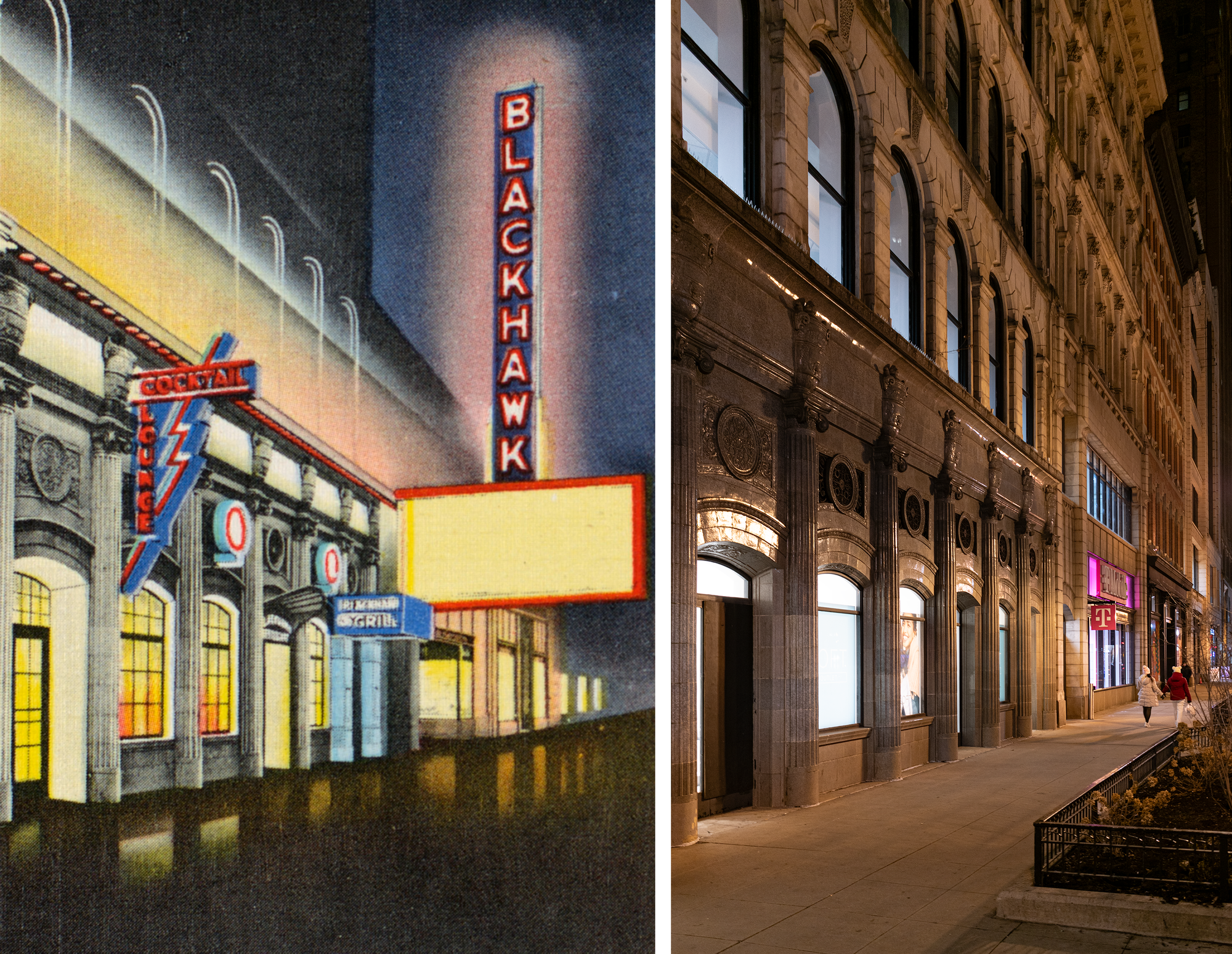
So, what’s changed since this 1942 postcard? Superficially, not too much—the marquee, the awning, and the smaller signage is all gone, as neon blinked out across US downtowns—but the terracotta facade looks almost new. It’s just that it’s now only skin deep, a three-foot veneer over a completely new retail space on the first floor, gym on the second, and parking above. They—SCB and McGuire Igleski & Associates—clearly succeeded with the facadectomy here, because most people would never guess that this facade was just a shell. Shame about the parking, though—going from a restaurant, light manufacturing, and office space to car storage seems like a real downgrade.
Only a dozen or so hang on in the Loop today, but Italianate midrises like this one sprung up by the thousands after the Great Chicago Fire in 1871. It’s a dynamic that evokes ecological succession—the way certain plants quickly flourish and dominate an ecosystem after an event like a fire or a clear-cut logging, only to eventually lose their position and die as slower-growing but taller and more aggressive trees overtop them.
This specific Italianate building was developed by the estate of Ira Couch (whose mausoleum, notably, is Lincoln Park's last tomb leftover from its use as a cemetery). Couch made a fortune through land and real estate development in Chicago, and his estate continued to be an active local player even after his death in 1857. The Couch Estate hired Chicago’s first recognized architect, John Mills van Osdel, to design both this building and its immediate neighbor. One of Chicago’s most prolific architects from the 1850s into the 1870s, van Osdel had designed multiple buildings for Ira Couch himself before he died, so this was an architectural and business relationship that transcended death.
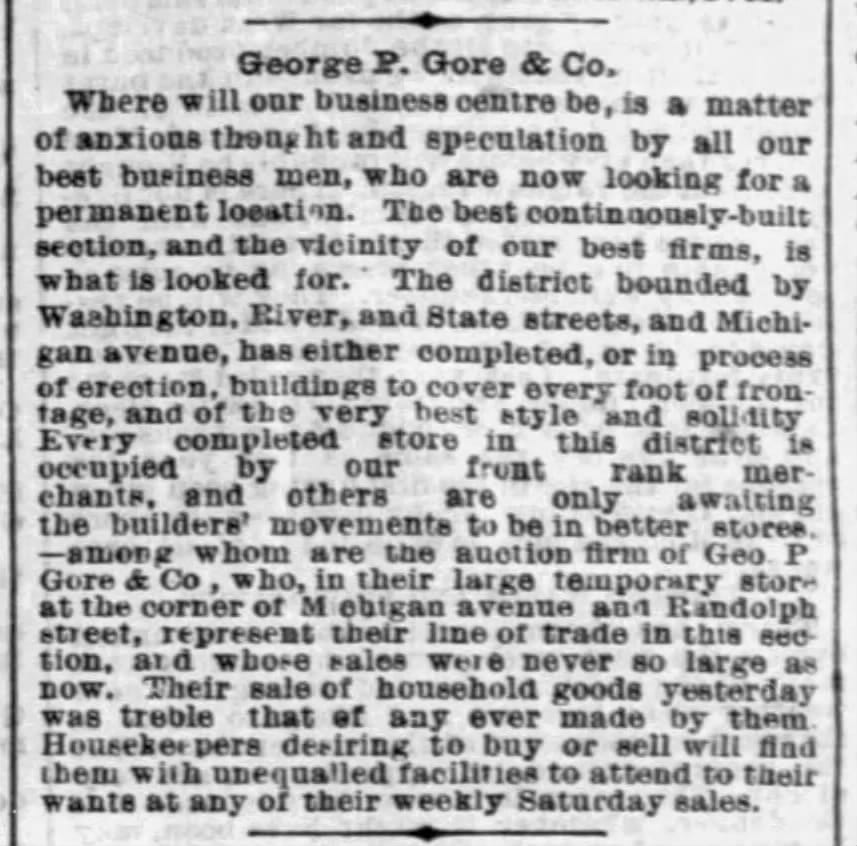
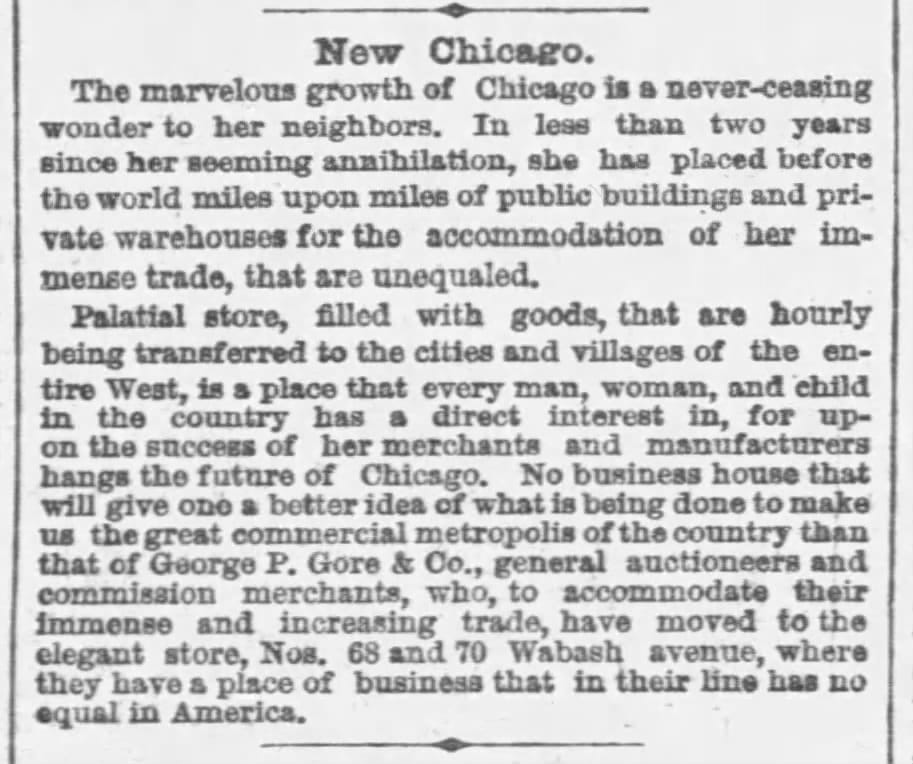
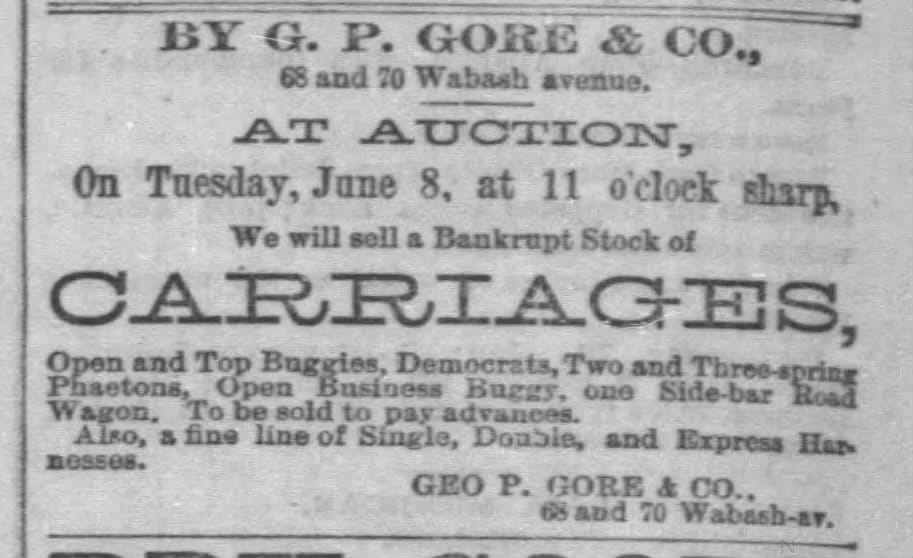
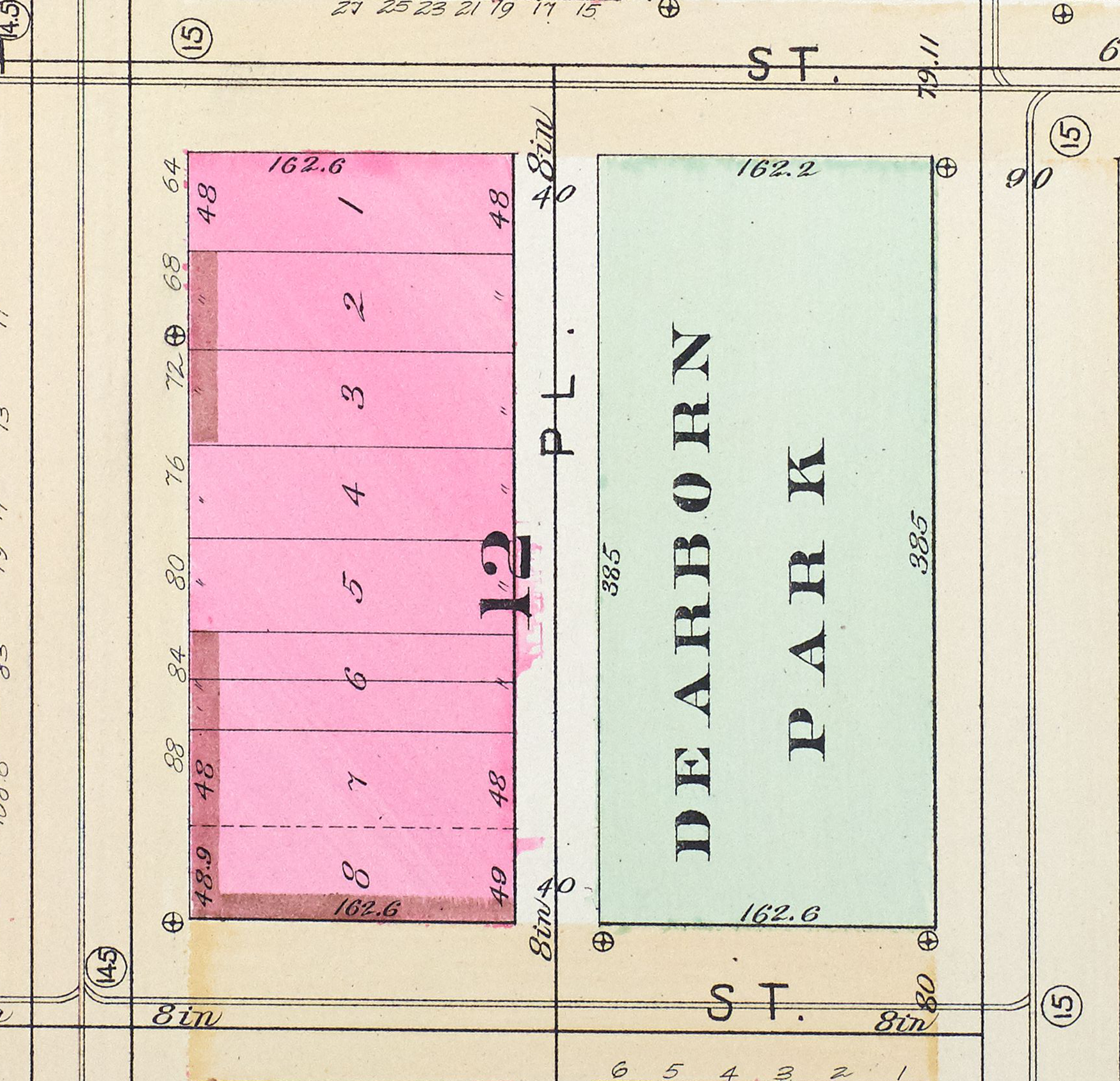
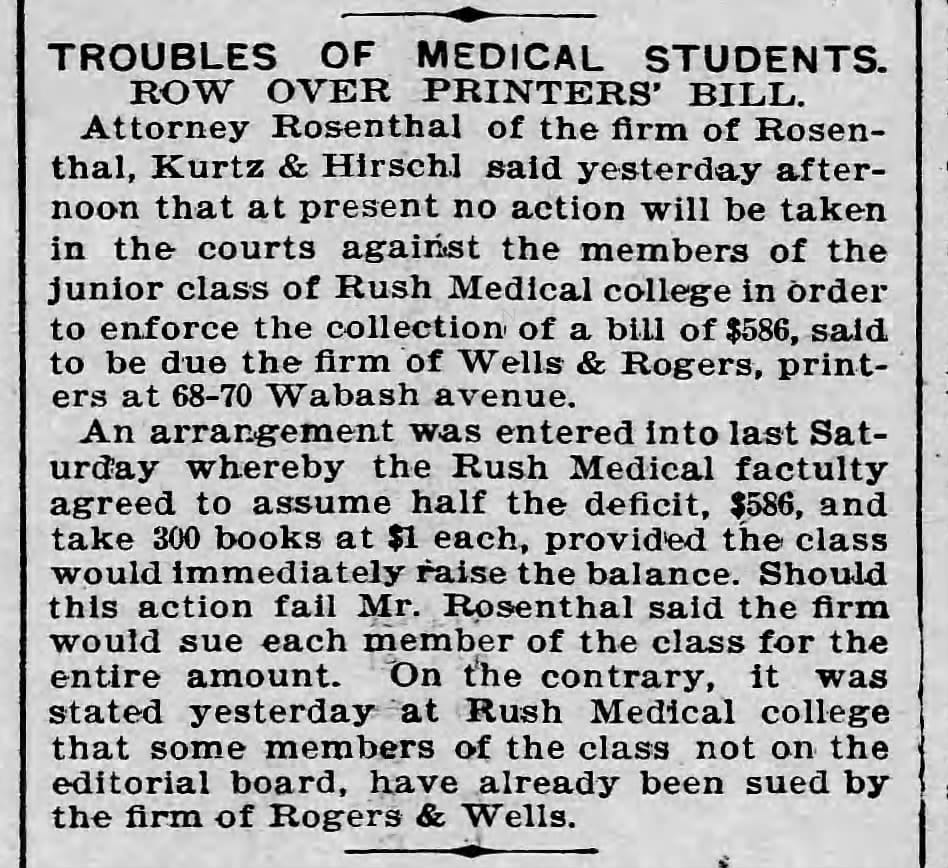
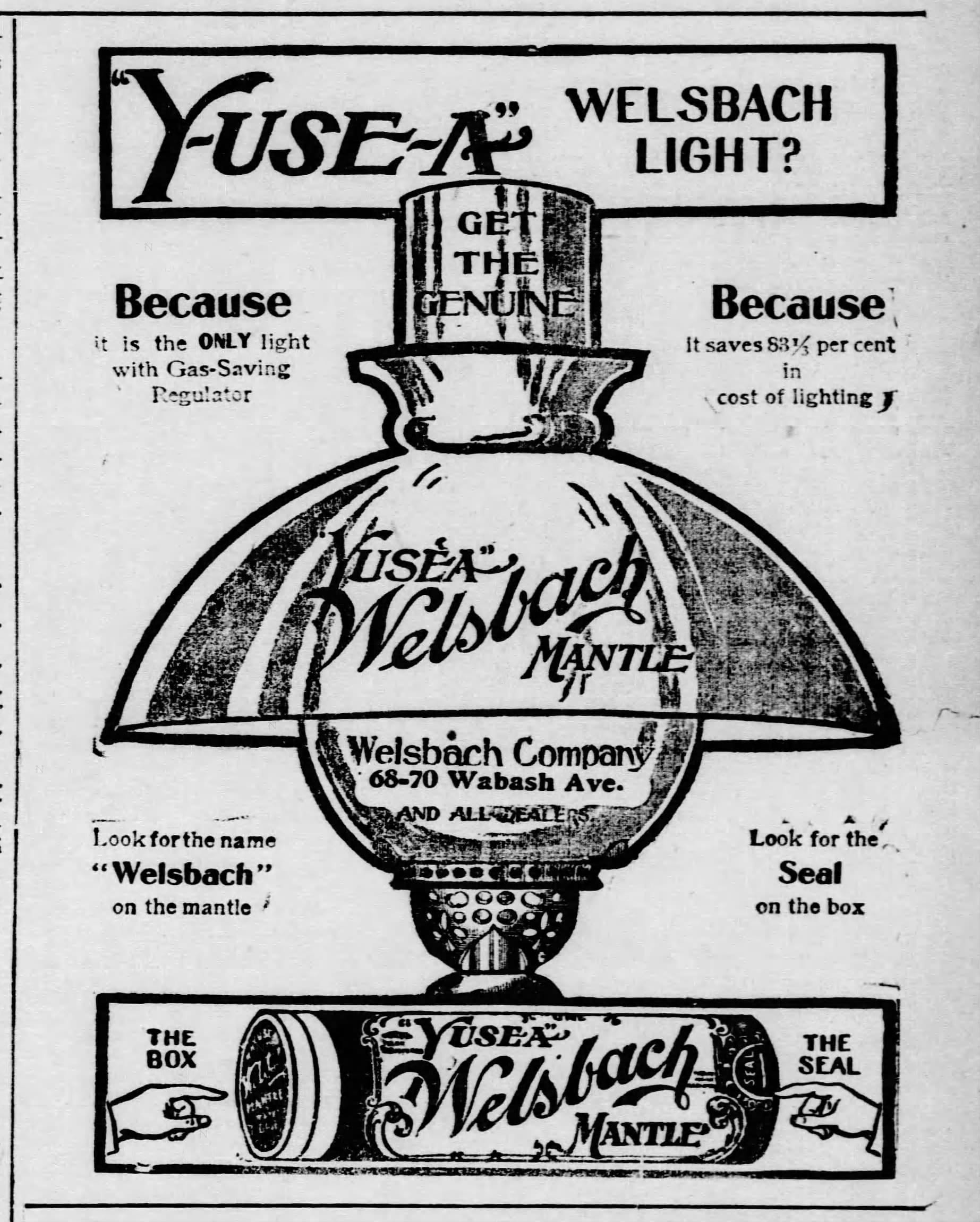
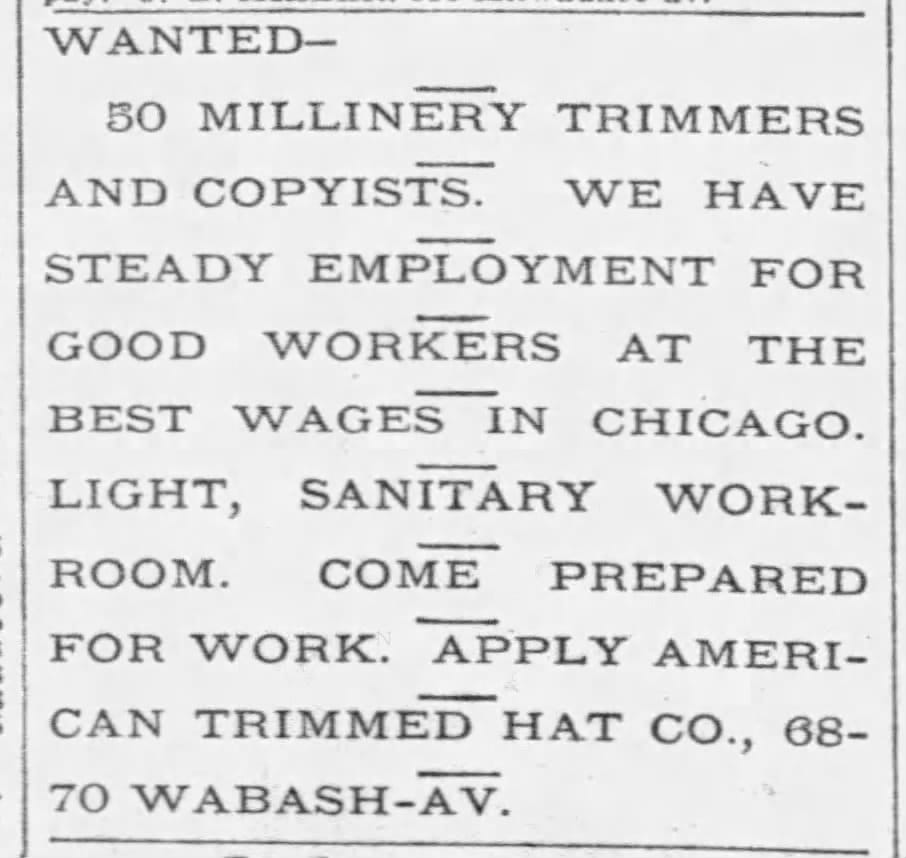
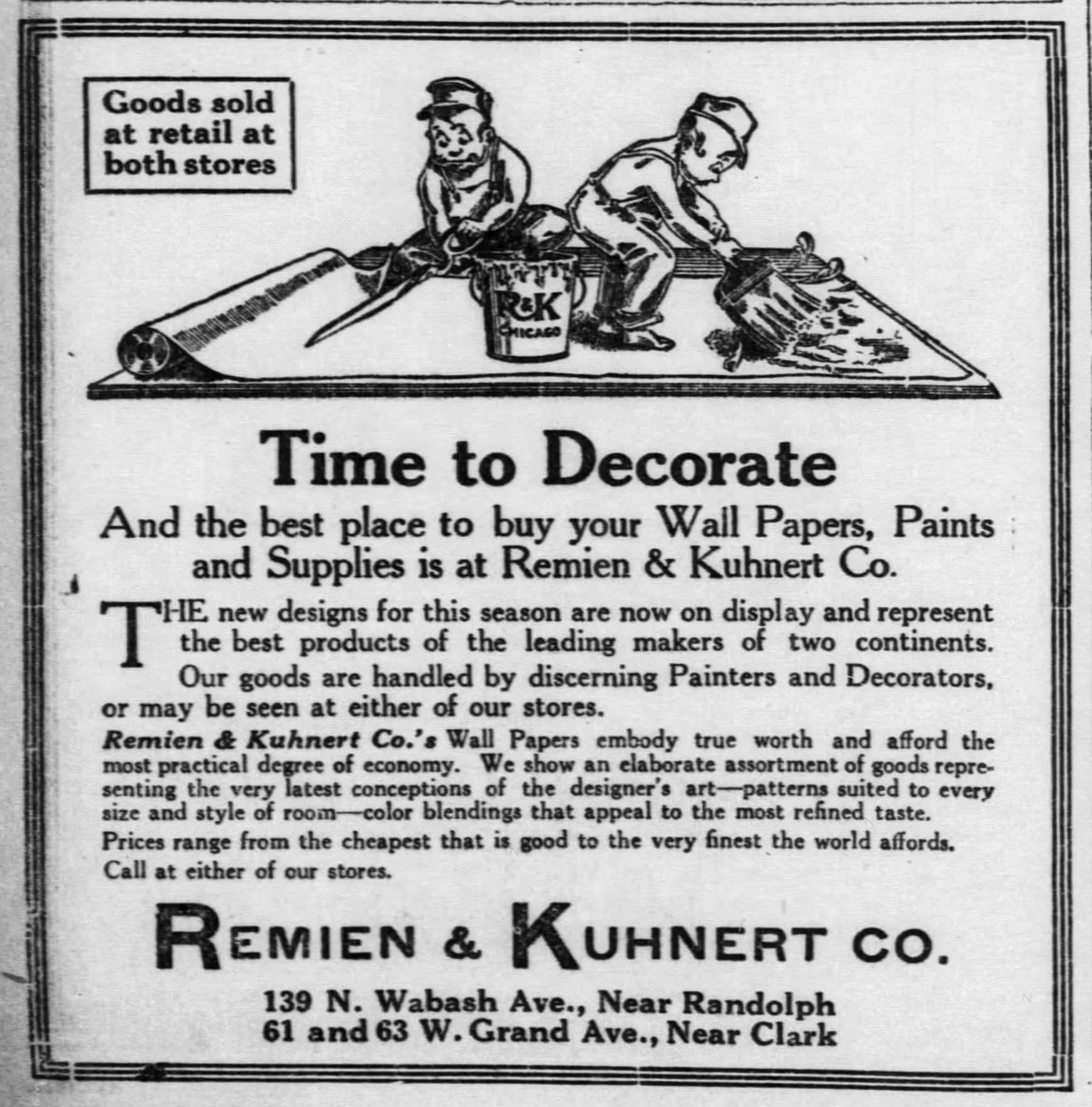
Two 1872 articles on where George P. Gore will go and their new space | an 1875 ad for an auction at George P. Gore's space in this building | 1886 fire insurance map | 1896 article about a conflict with the print shop in the building | 1900 Welsbach Ad | 1905 ad asking for miliners | 1914 Remien & Kuhnert Ad
Completed in 1872, it housed George P. Gore auctioneers when it opened, with warehousing, offices, and light manufacturing above. Other tenants in its first few decades included the American Trimmed Hat Co., Wells & Rogers printers, HR Eagle & Co. farmers wholesale supply house, and Remien & Kuhnert wallpaper company. The Welsbach Company was the big tenant in the 1890s and 1900s—the company manufactured the Welsbach gas mantle, a kind of weird gas bag light fixture that used fabric infused with thorium (given Chicago’s history with thorium pollution—radioactive thorium pollution from the Lindsay Light Company made parts of Streeterville a Superfund site—it seems fitting that we immediately turned it into a restaurant [hopefully they weren’t actually manufacturing anything here]).

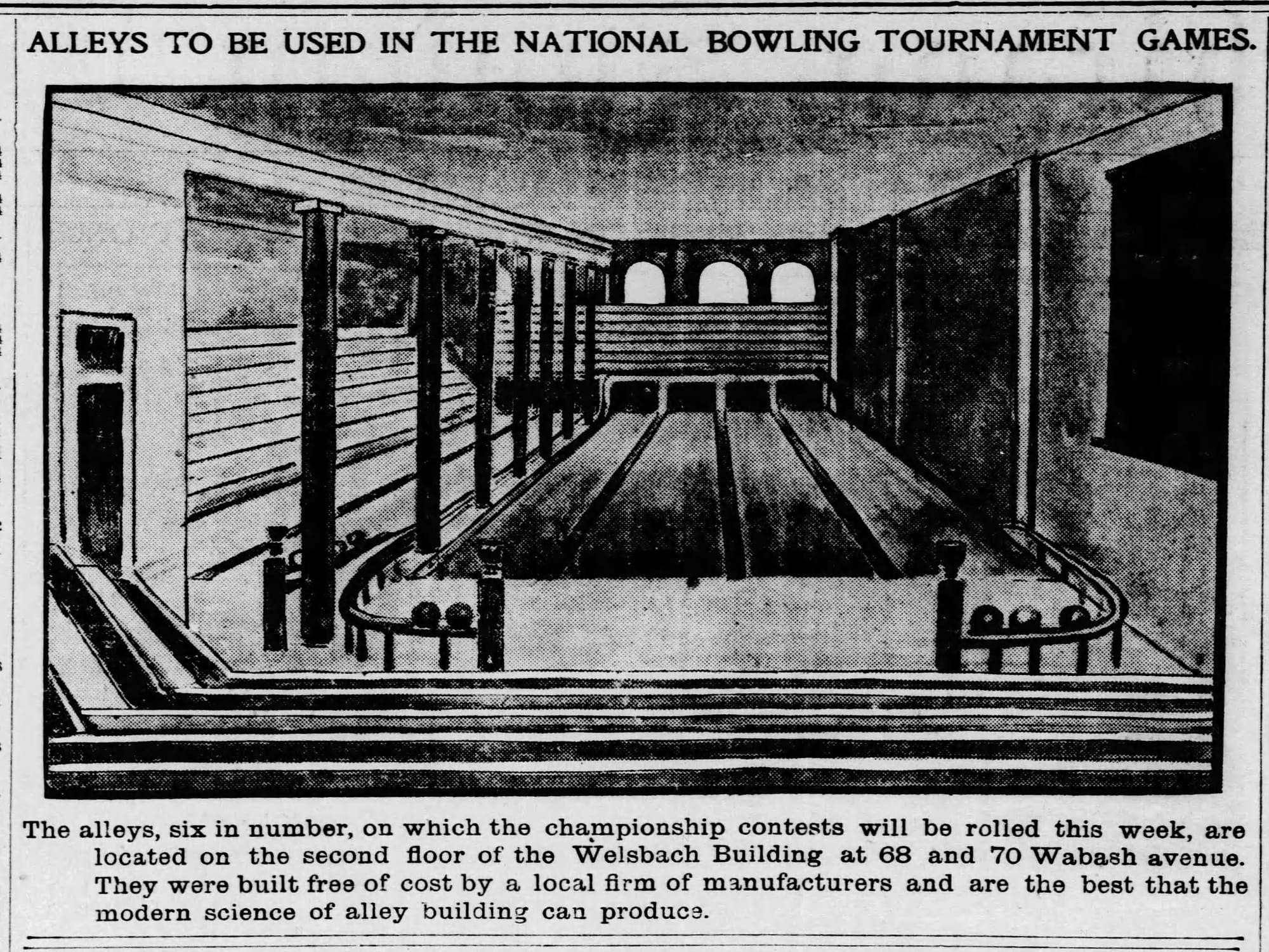

1900 and 1901 articles about the American Bowling Congress leasing the second floor of the building and using it for their first-ever national bowling tournament
In 1900 the American Bowling Congress—the predecessor to the current bowling governing body, the United States Bowling Congress—leased the second floor of the Welsbach Building. With equipment donated by Brunswick (still headquartered in Chicago a century later, although they exited the bowling business in 2014), six lanes were built, along with bleachers for spectators. In 1901, the ABC hosted the first national bowling competition in the US here, with strong showings from Chicago, Erie, and St. Louis bowlers (Cap Anson, the baseball Hall-of-Famer and racist asshole who introduced the Color Barrier to the once-integrated sport, bowled poorly).
By the 1910s the 40-year-old building was outmoded, out of fashion, and struggling for tenants—the obsolescence and redevelopment cycle hasn’t changed too much today. Otto Roth took over the building in 1920, hiring the firm of Vitzthum & Burns to revitalize it, redesigning the first floor and basement as an enormous restaurant, the Blackhawk.
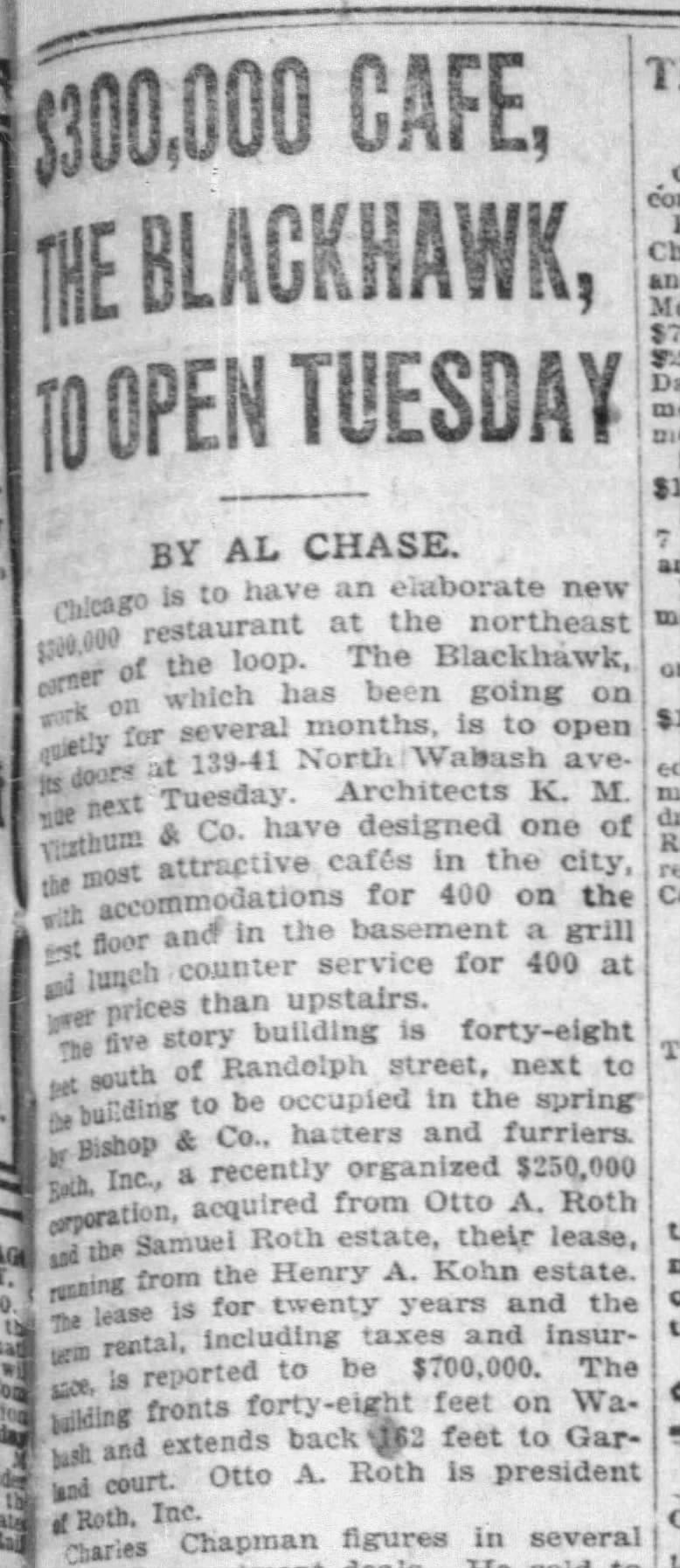
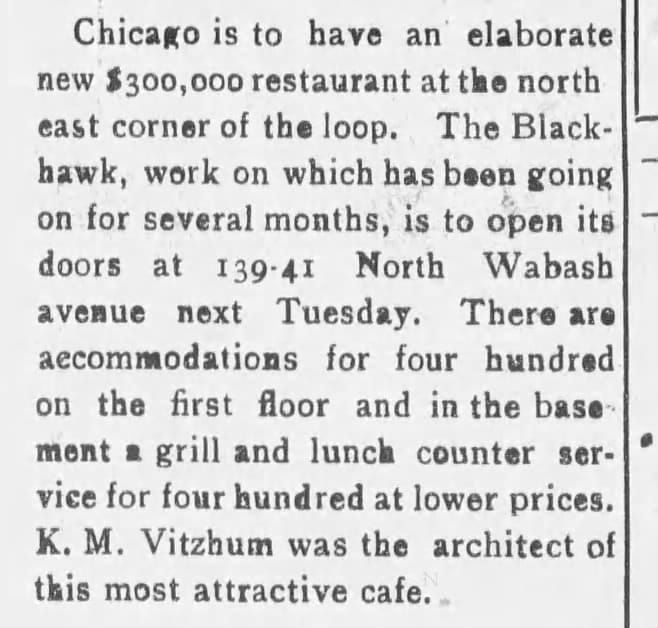
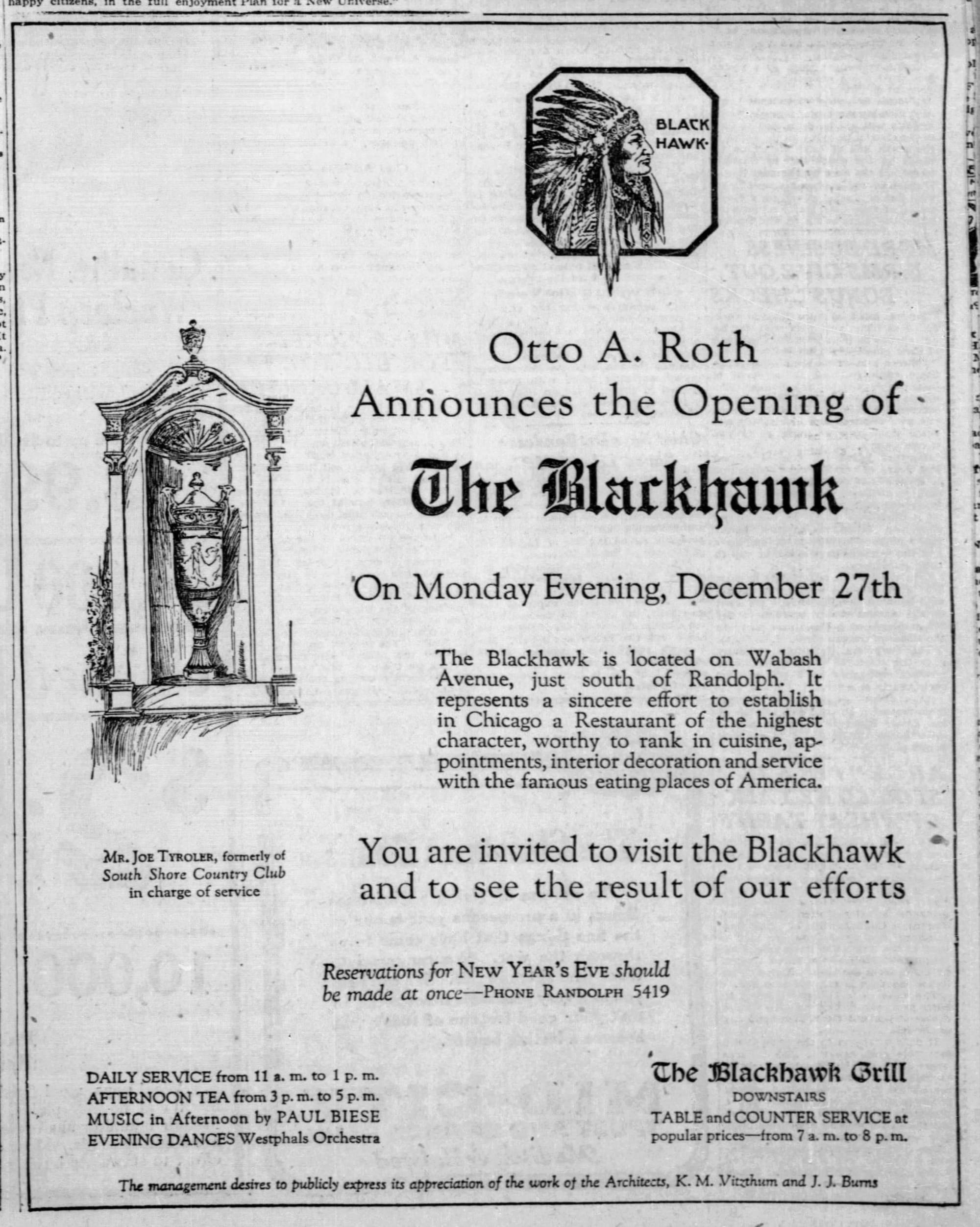

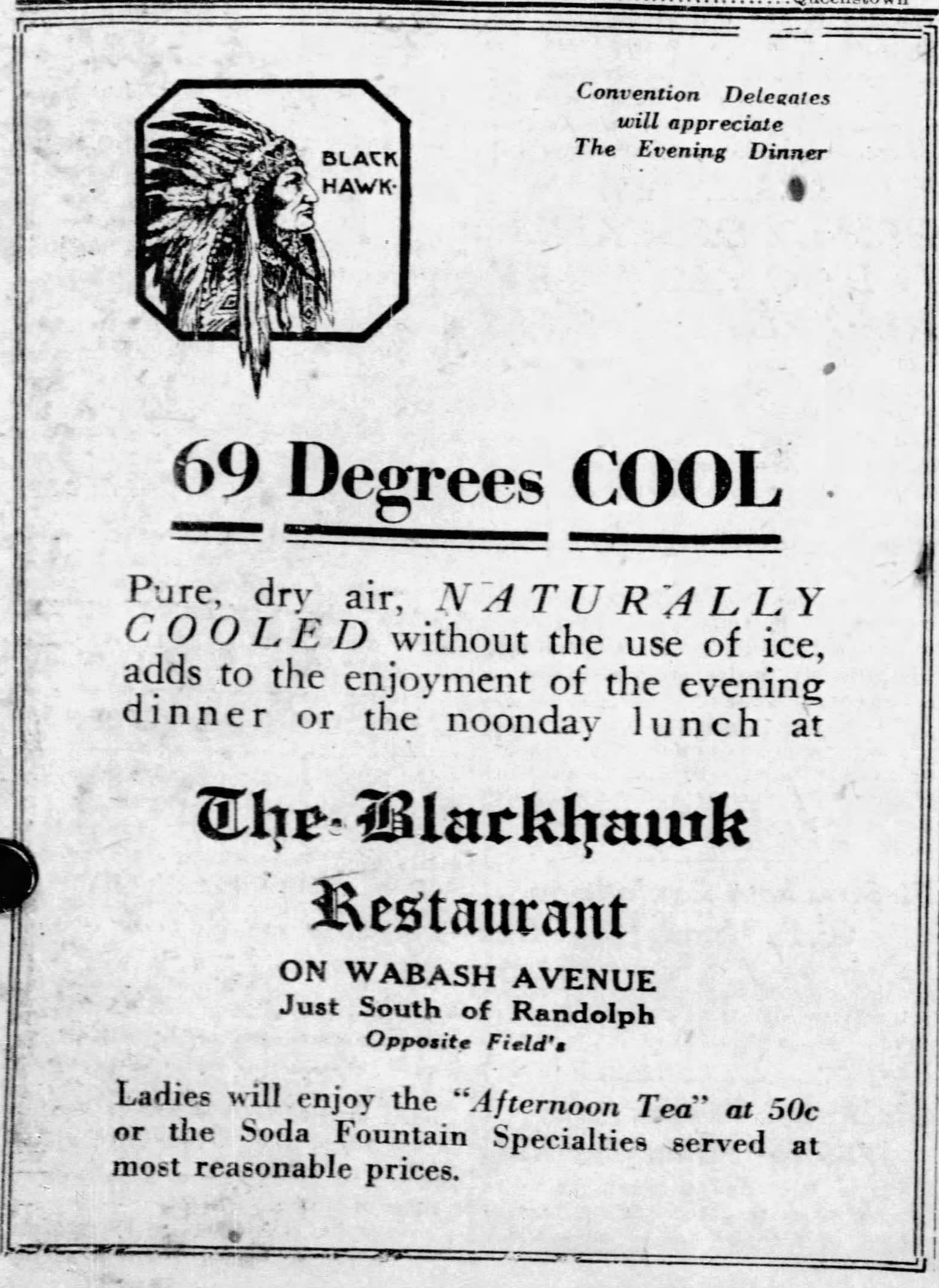
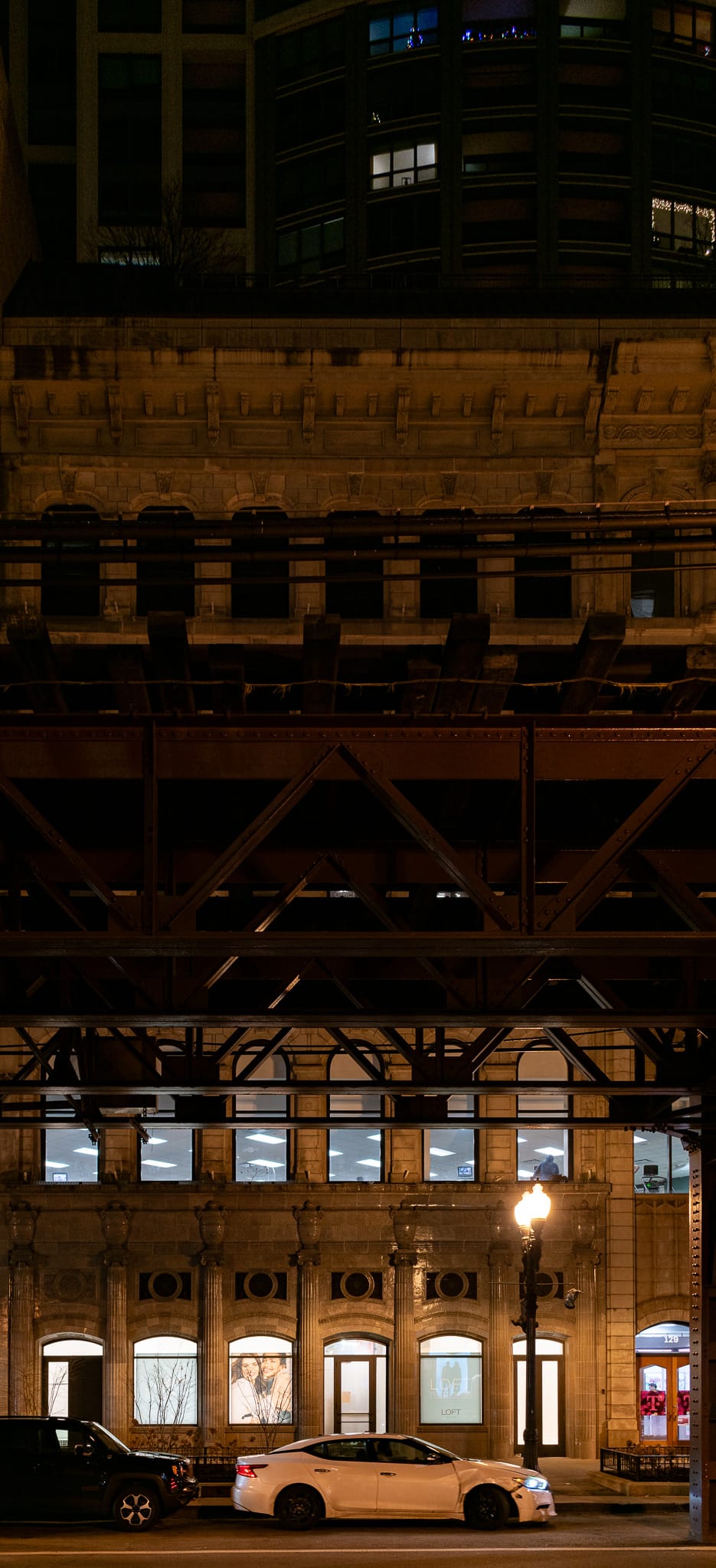
1920 articles and advertisements about the opening of the new Blackhawk Restaurant and the stink bomb that was thrown on opening night | 1921 ad about it being cool in the restaurant | 2024 photo
It was an early commission for architects Karl M. Vitzthum and John J. Burns, who’d later build their reputation designing banks and offices across the Midwest. Along with more than 50 bank buildings, in Chicago the firm designed 1 N LaSalle, the Old Republic Building, the Midland Hotel, and the Steuben Club. Liberal use of terracotta is a throughline in their body of work, so the way they slapped a terracotta catalog on this facade foreshadowed how they’d spend most of the 1920s. The end result is quirky—a floor of foreboding gray terracotta in a classical revival style underneath four stories of 1870s Italianate stonework.
When it opened in late December 1920, the Blackhawk Restaurant had seating for more than 800 (!) people across two floors, with a more formal dining room on the ground floor and a casual lunch counter in the basement.
It took Otto Roth and the Blackhawk a few years to find the niche that would propel the restaurant to national prominence in the 1930s—big band jazz. The Coon-Sanders Nighthawks kicked off the big band era here in 1926 with a winter residency, at a time when the Blackhawk was very much considered a restaurant and not a music venue—both Roth and the Nighthawks were unsure it would succeed. Prohibition had hammered the nightclub scene, though, and the US was in the midst of a dance craze, so the “dine and dance” model took off. With performances broadcast nightly on WGN radio, the Blackhawk became an influential institution in the early jazz scene.
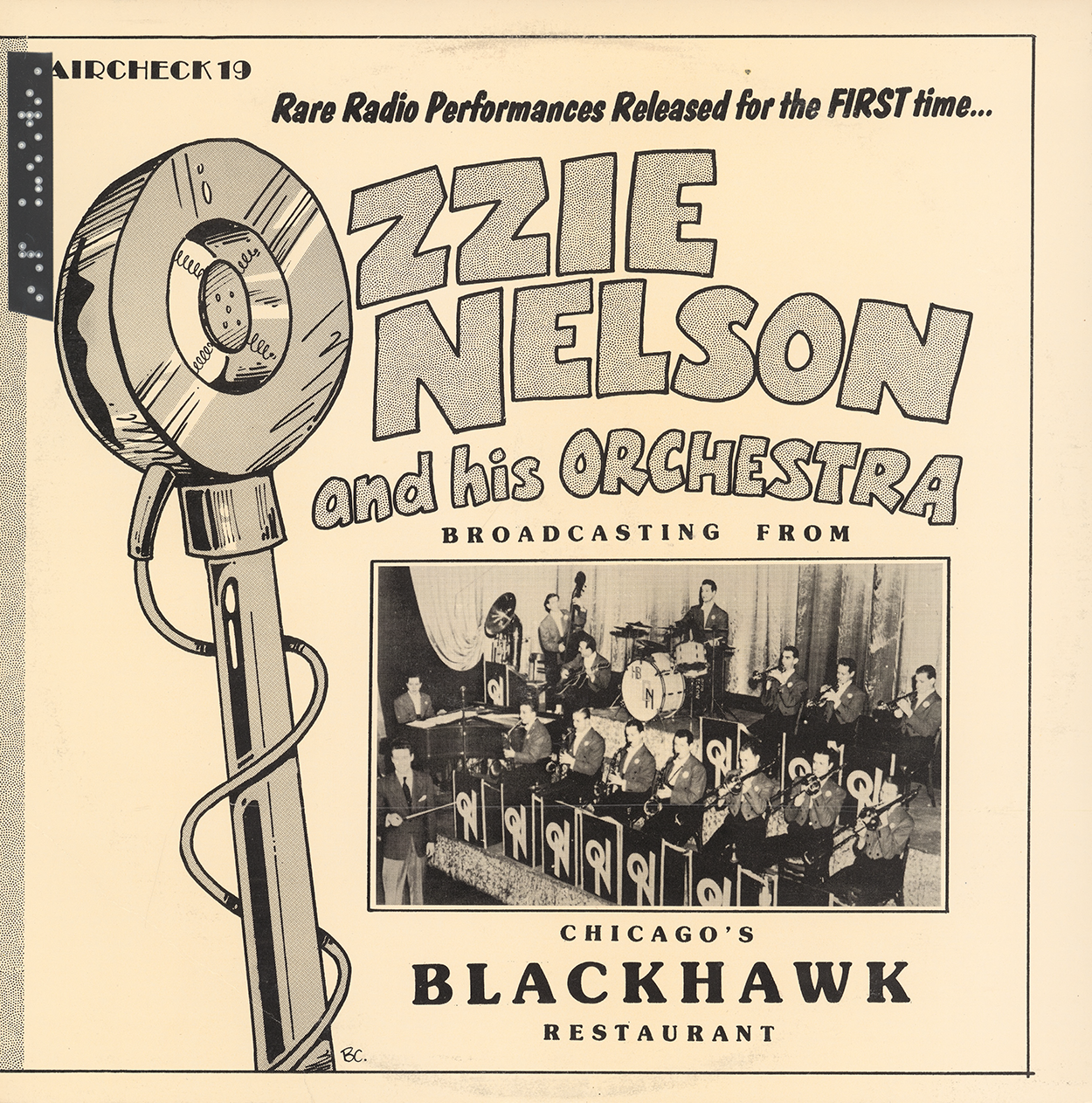

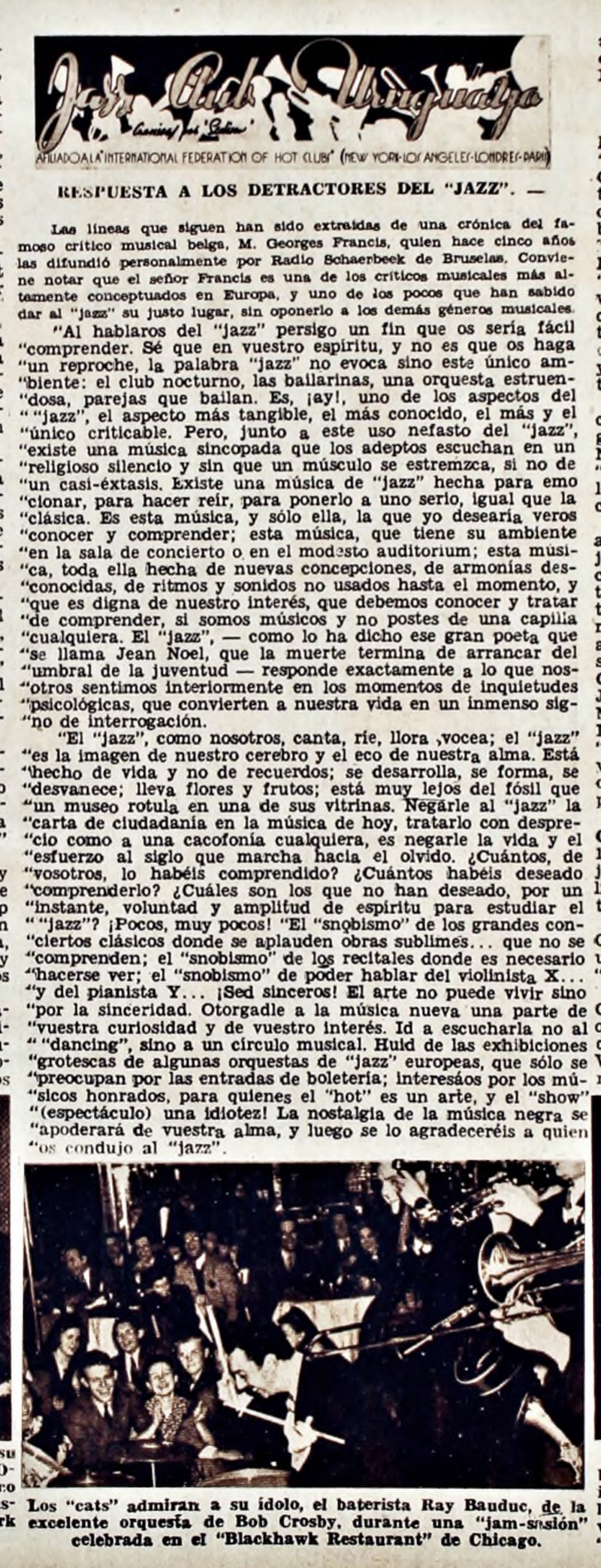
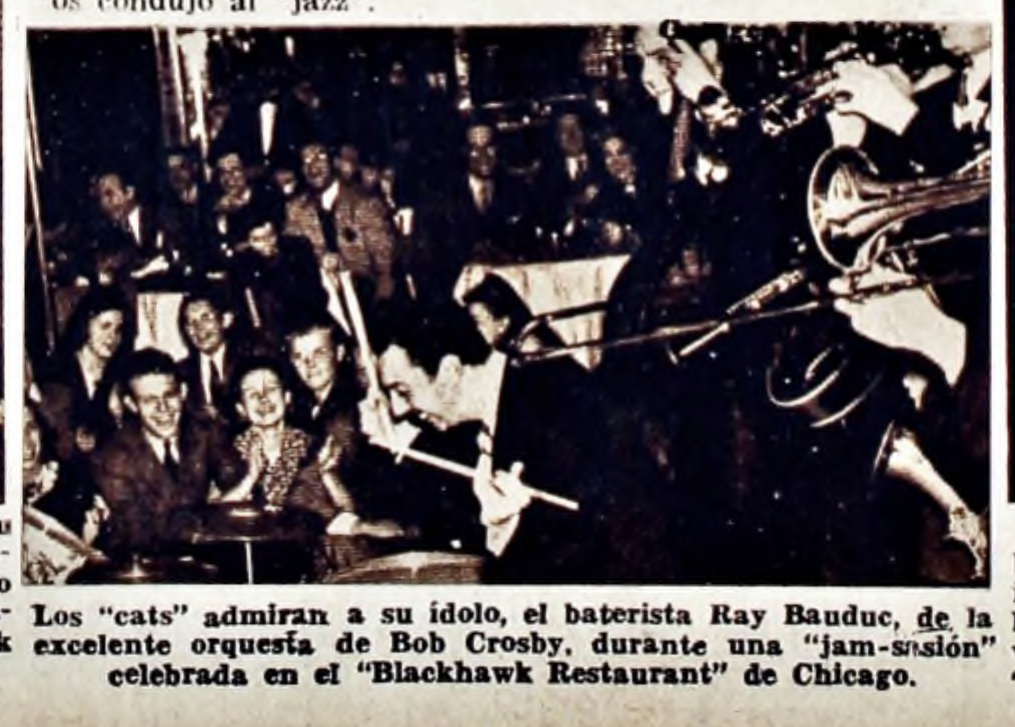
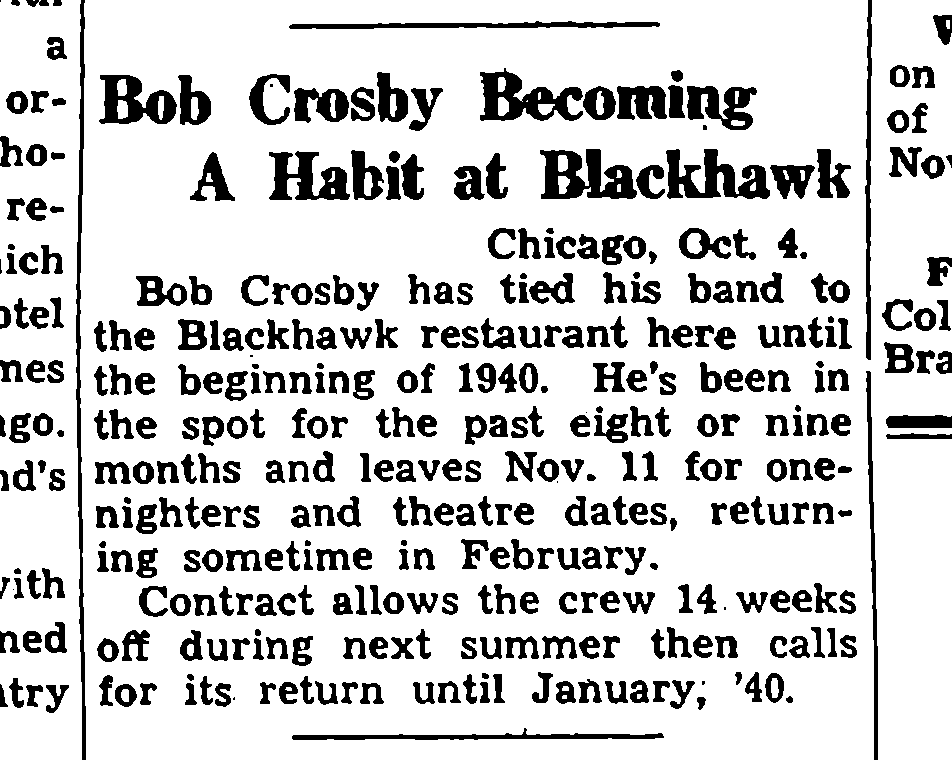
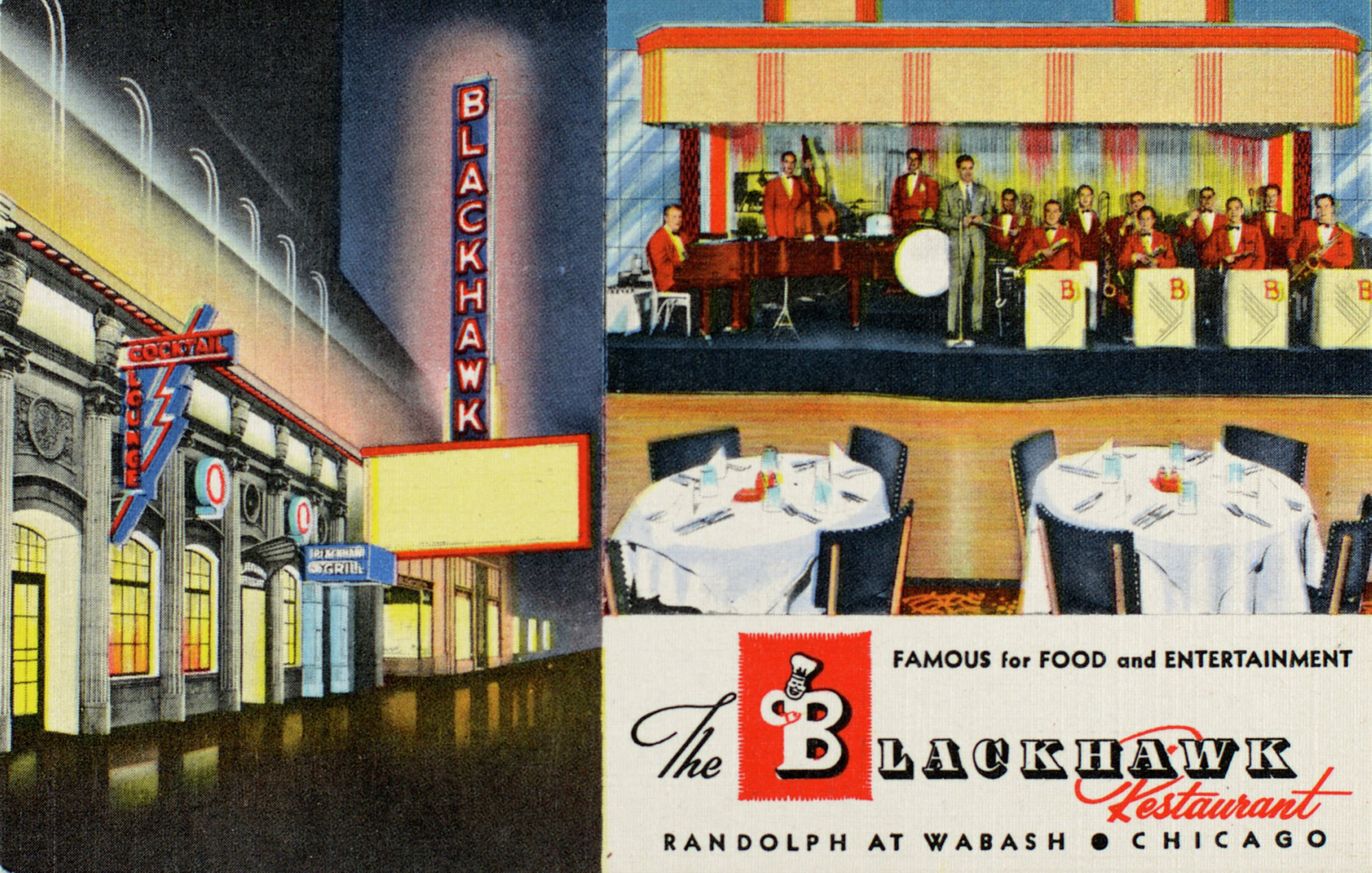
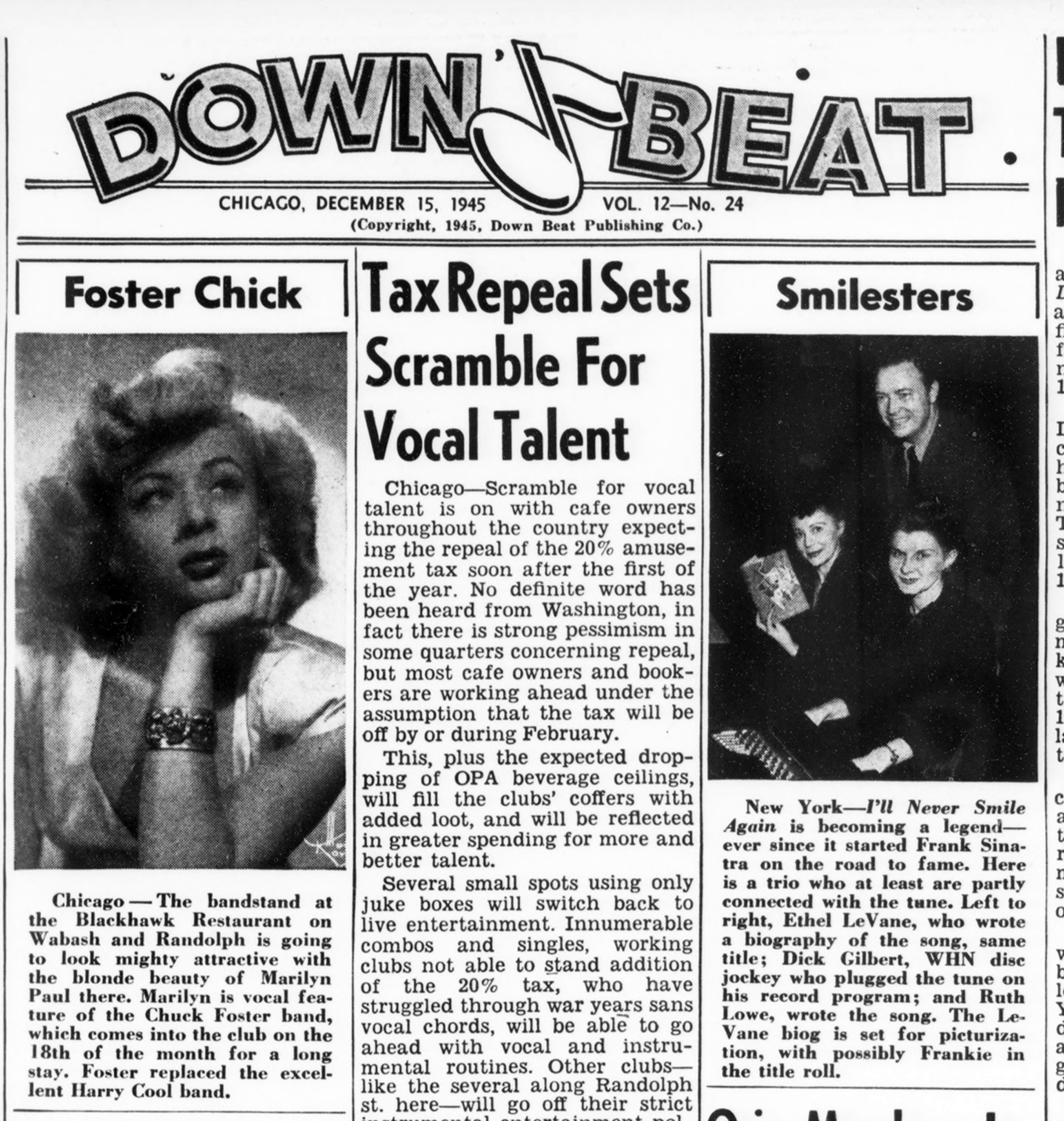
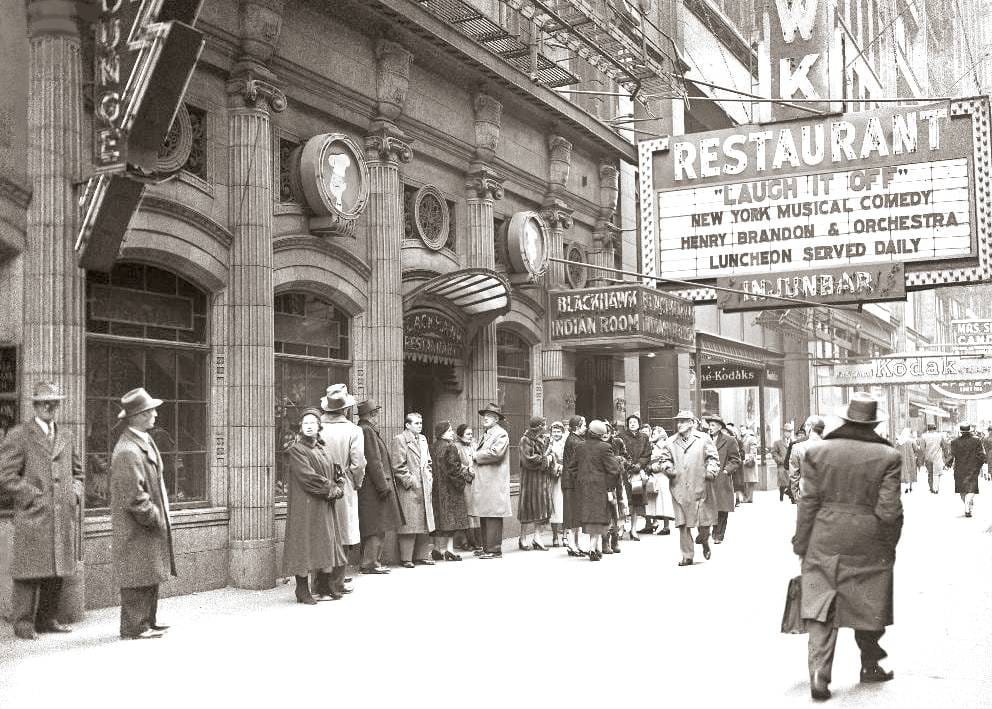
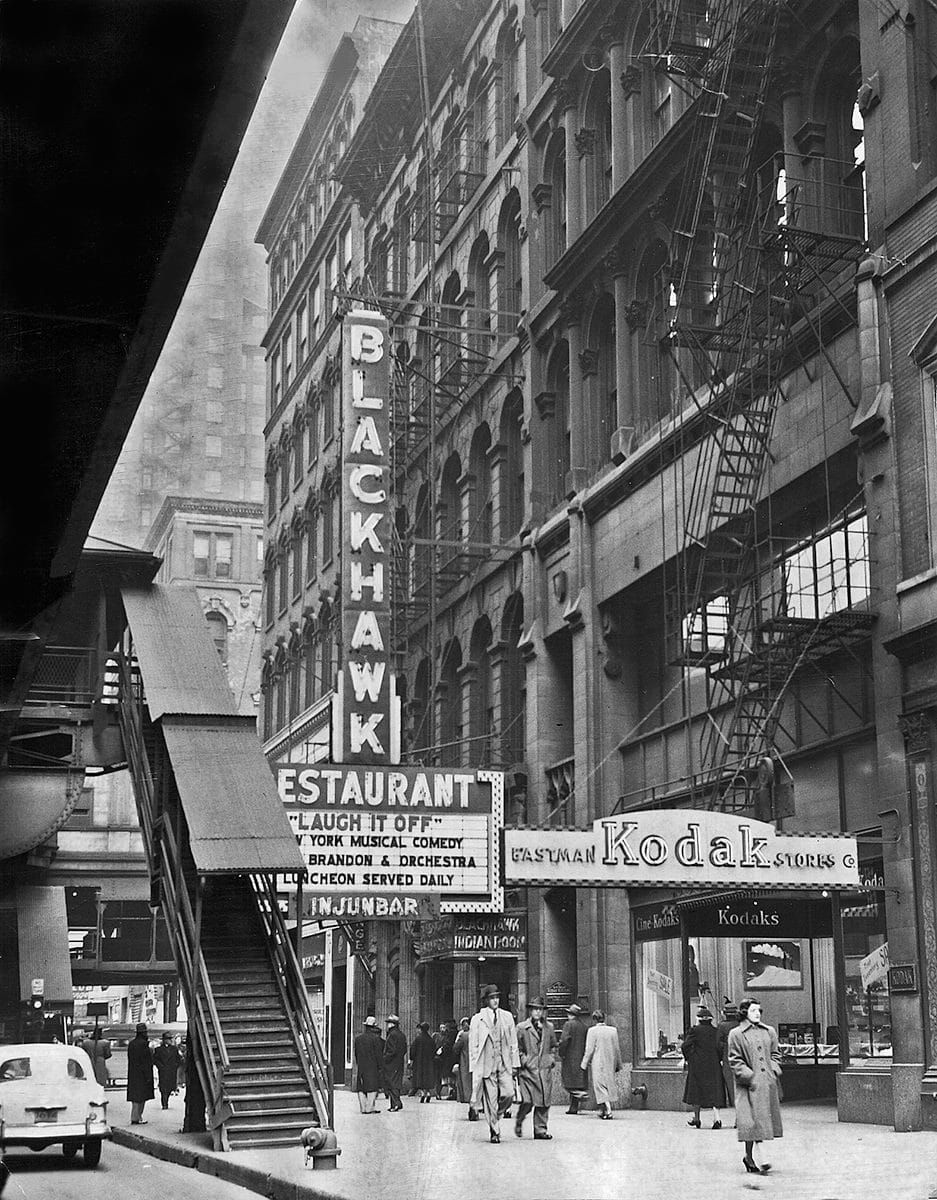
LP cover from a 1940 Ozzie Nelson performance at the Blackhawk, the Internet Archive | 1937 Chicago Defender article about Don Pierson appearing at the Blackhawk | 1938 Uruguayan article and photos about jazz in the US/Chicago, "A Response to Detractors of Jazz", the Internet Archive | 1938 article in Variety about Bob Crosby Orchestra at the Blackhawk, the Internet Archive | 1942 postcard, the Internet Archive | 1945, on the front page of Downbeat, the Internet Archive 1952 photo, the Chuckman Collection | 1952 photo |
After a few years, the Blackhawk replaced the Coon-Sanders Nighthawks with Ben Pollock’s Orchestra, which featured (early in their careers) Benny Goodman, Glen Miller, the Teagardens, Charles Spivak, and Jimmy McPartland. A real who’s who played the Blackhawk from the 1920s through and 1940s, including Louis Armstrong, Gene Krupa, Hal Kemp, Red Norvo, Mel Torme, Art Jarrett, Kay Kyser, and Ozzie Nelson.
One of the peaks of the Blackhawk’s jazz era came during the tenure of the Bob Crosby Orchestra, which was led by Bing’s hipper, less famous brother. While waiting for the rest of the band to return from a break, an improvised jam by bassist Bob Haggart and drummer Ray Bauduc would become the spontaneously composed “Big Noise from Winnetka”. Outrageously creative, it climaxes with Bauduc playing Haggart’s bass strings with his sticks.
The massive jazz dinner clubs started to run out of steam in the 1940s, and Otto Roth died in 1944. His son, Don, took over the family restaurant and eventually put his own twist on it in 1952. Where the old Blackhawk was dine and dance, dinner with music as the spectacle, in the new Blackhawk the dinner itself was the spectacle—borrowing heavily from Lawry’s in California, the Don Roth’s Blackhawk featured spinning salad bowls (“so as not to bruise the tender greens”) and prime rib carts. Don’s version of the Blackhawk eventually took up four floors.
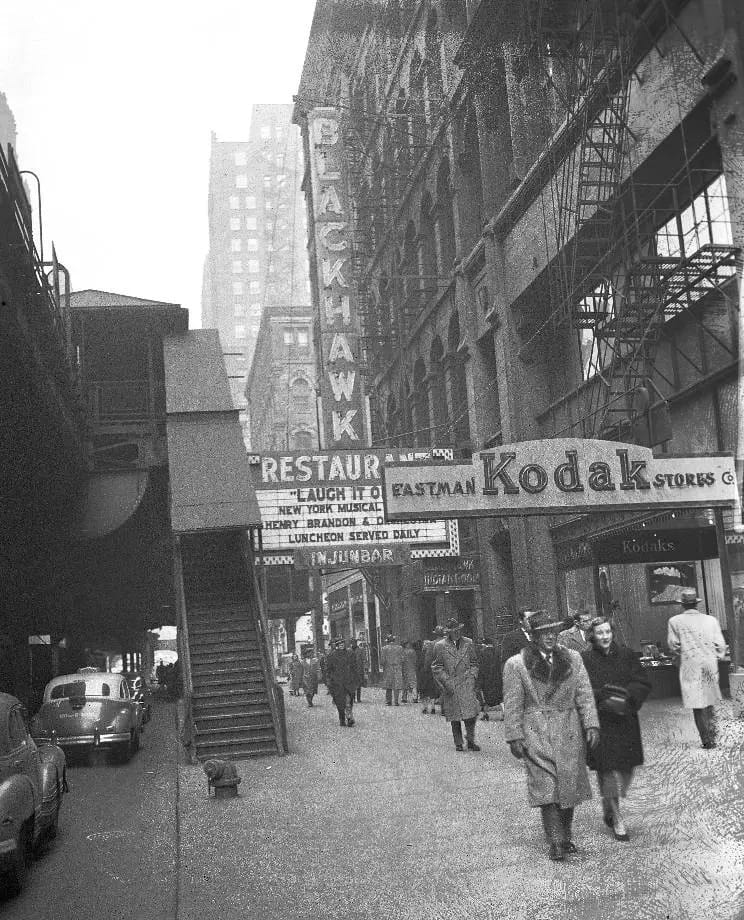
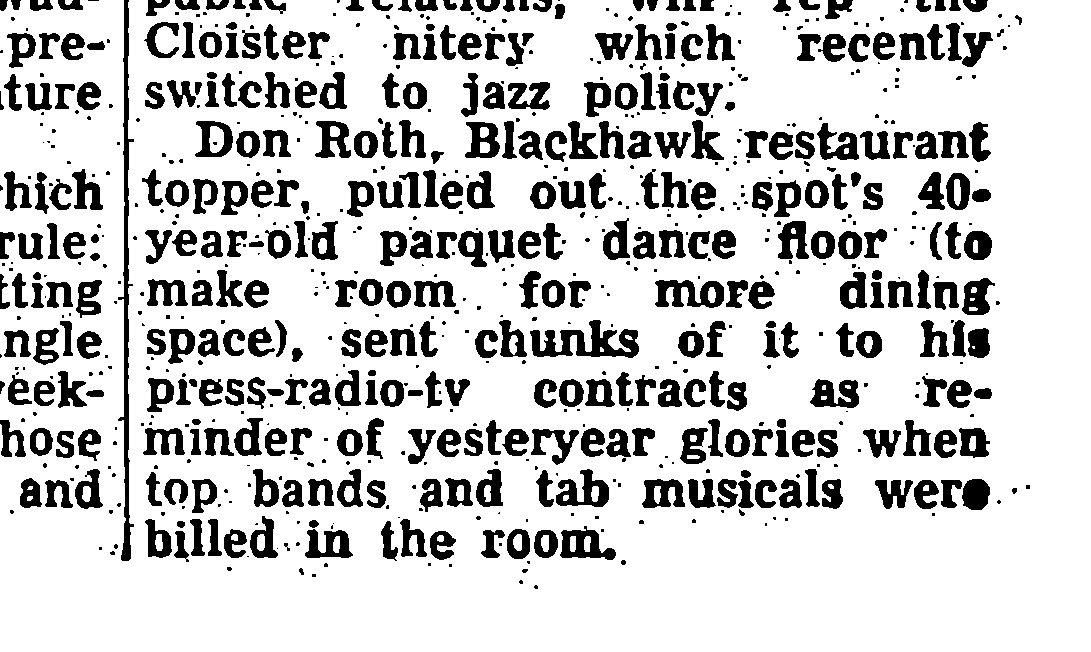
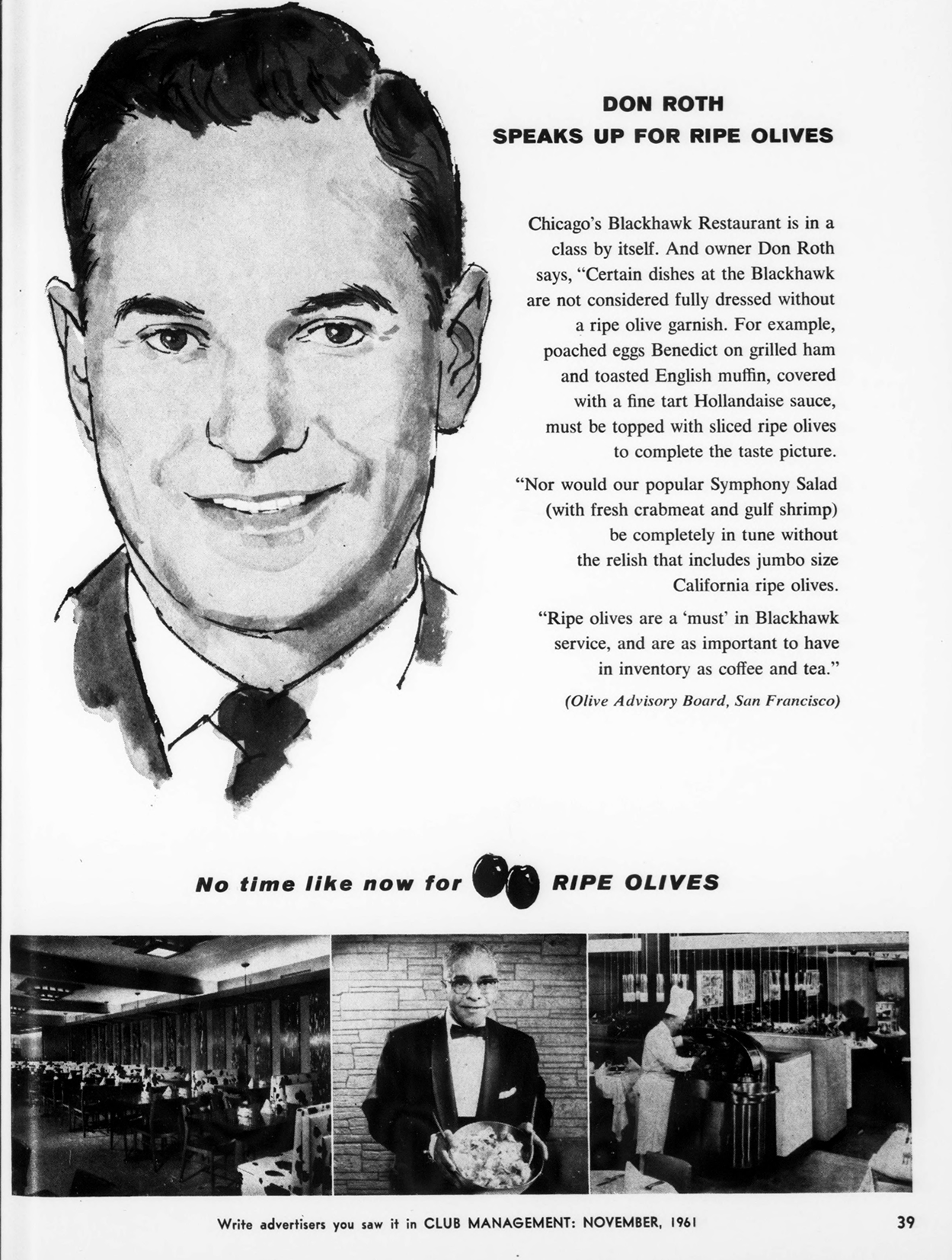
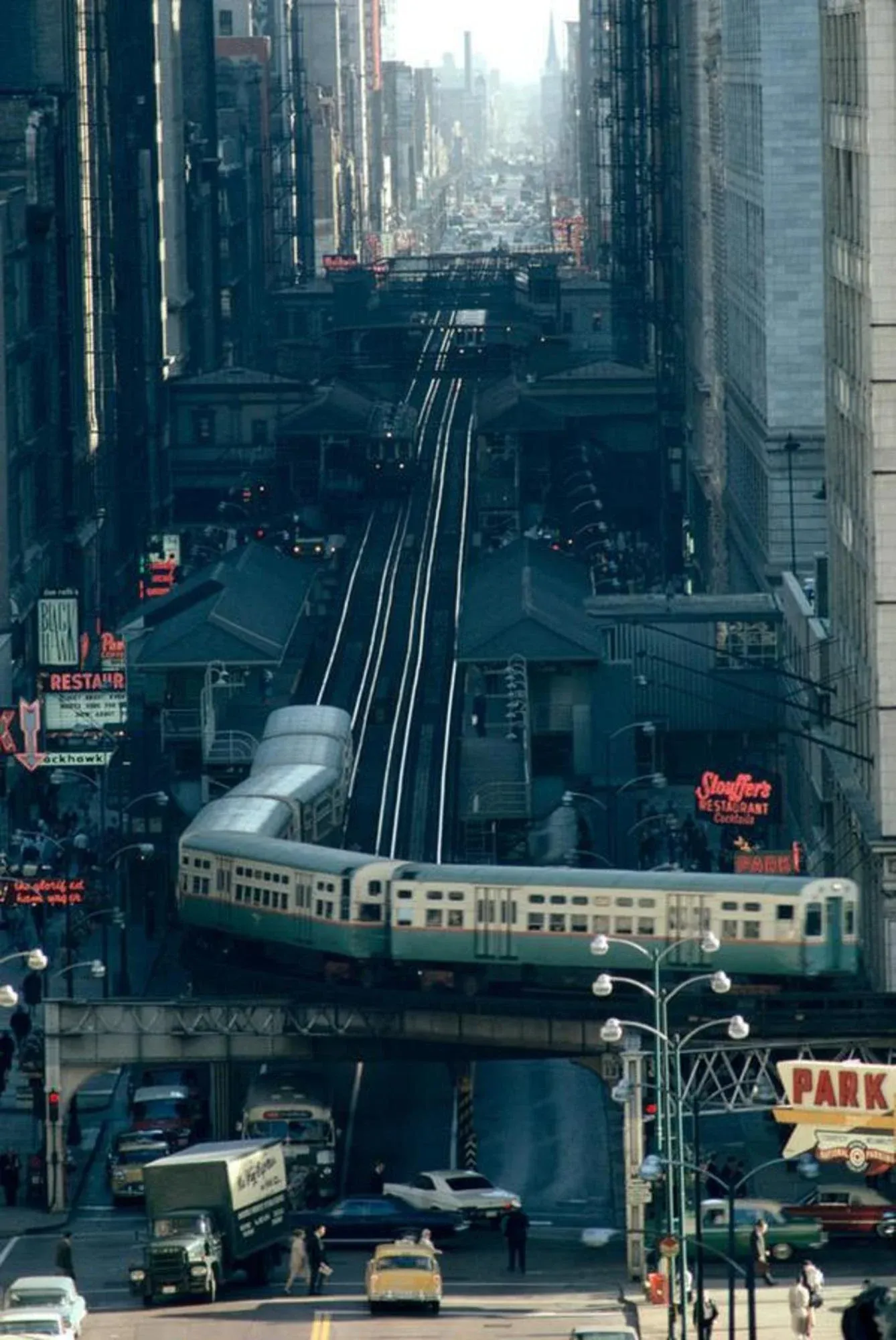
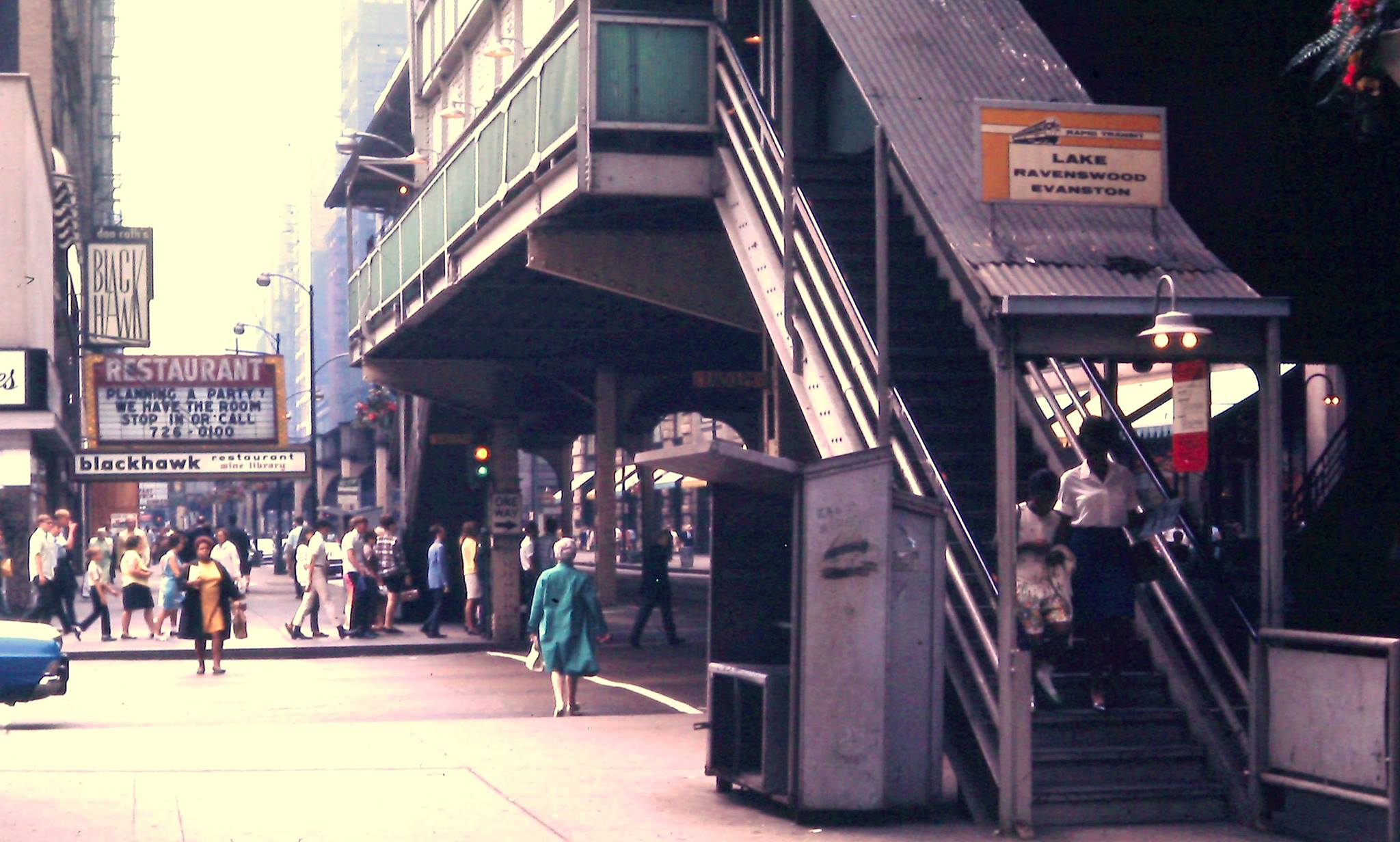
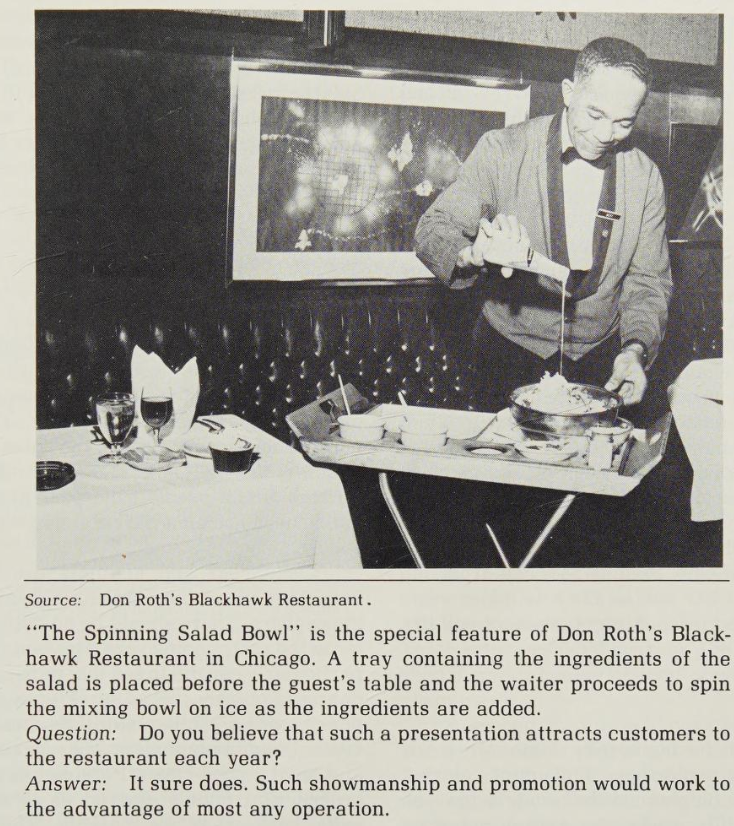
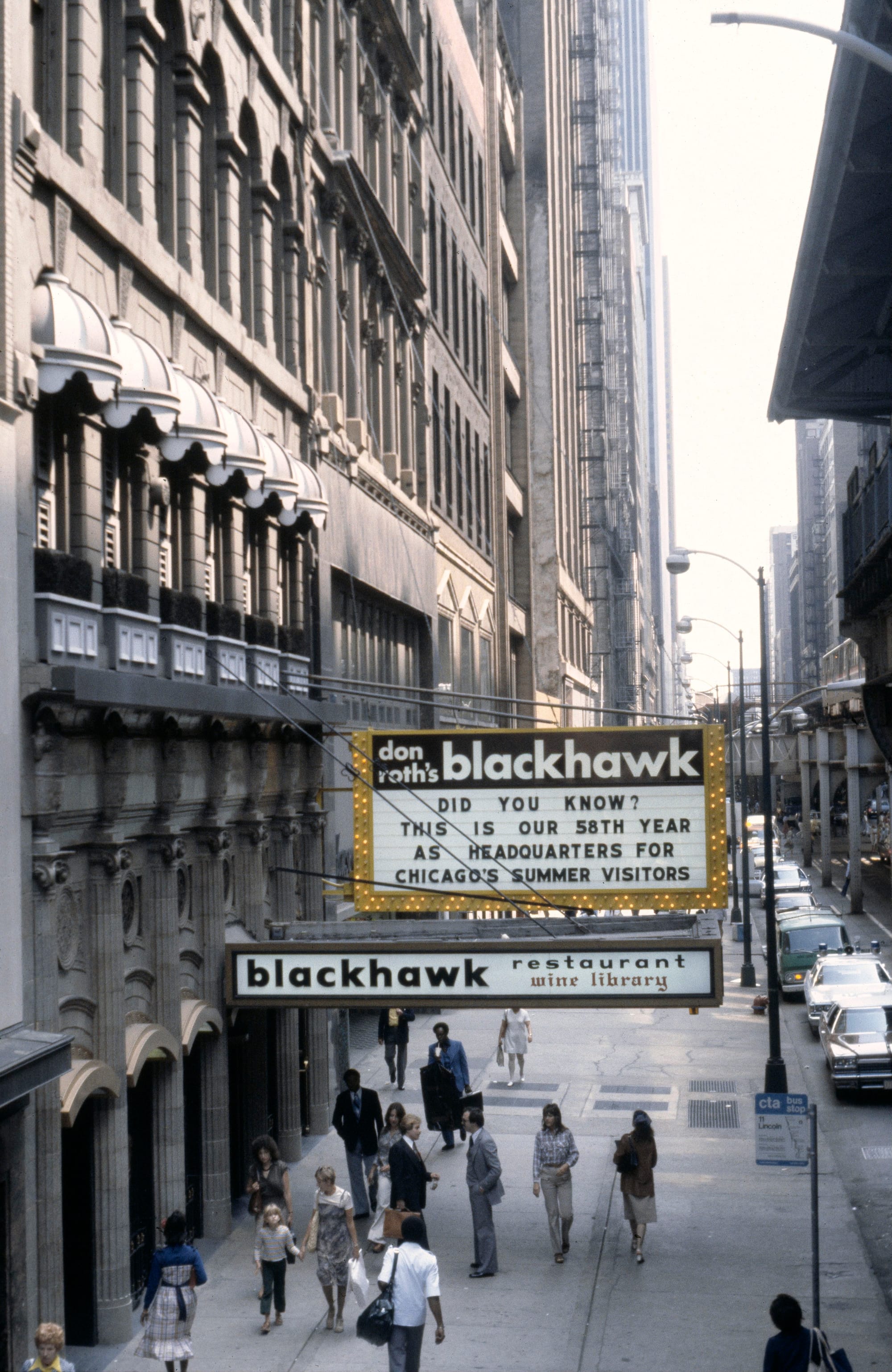
1952 photo | 1960, Don Roth sends the dance floor away, Variety, the Internet Archive | 1961 Don Roth olives ad, Club Management, the Internet Archive | 1967, James L. Stanfield | 1968 photo | 1979, the spinning salad bowl | 1979, C. William Brubaker, UIC Library
After forty years running the restaurant here—expanding to a few locations in the city and the suburbs along the way—Don Roth closed the original Blackhawk in 1984. While the restaurant was still making money, the real estate was valuable enough that he preferred to cash out, and Roth sold the building to Home Federal Savings & Loan of Lake County.
In the late 1980s, there was an unsuccessful push to landmark this row of post-fire buildings on Wabash, stymied by opposition from the building owners. Instead, they were included as a contributing buildings to the Loop Retail Historic District, which was added to the National Register of Historic Places in 1998. A connection to the pedway was added to the building in the 1980s, and a Talbots operated on the first floor for most of the 1990s.
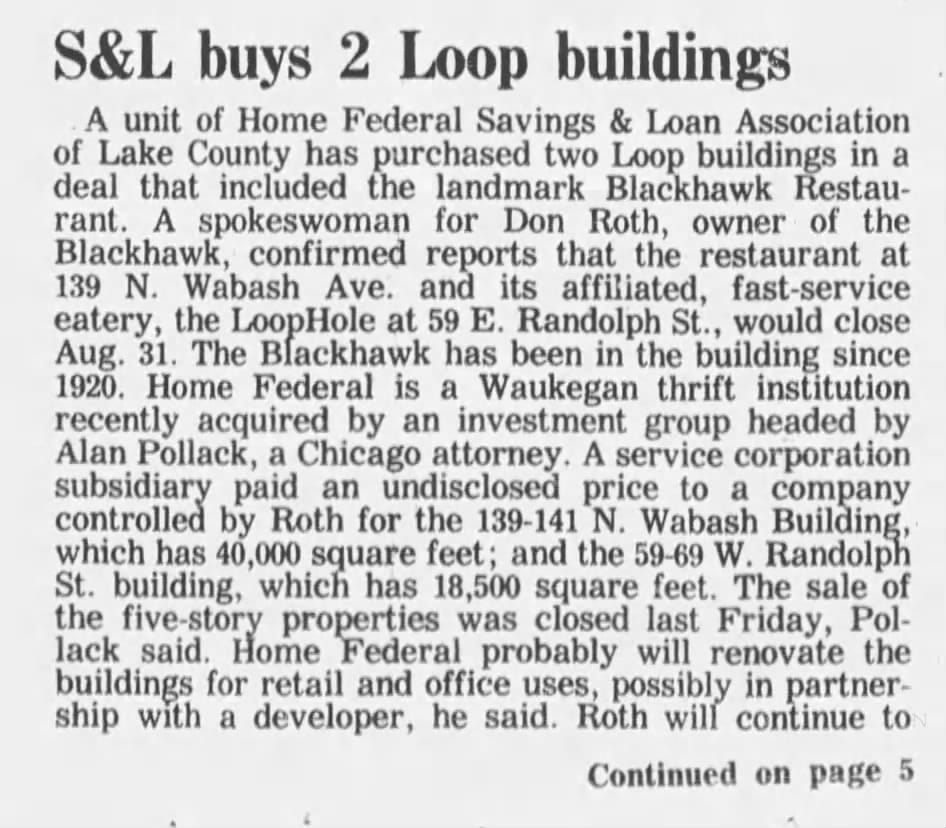
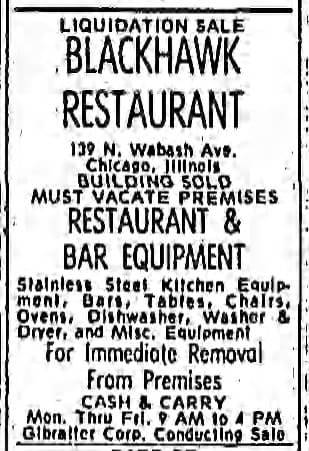
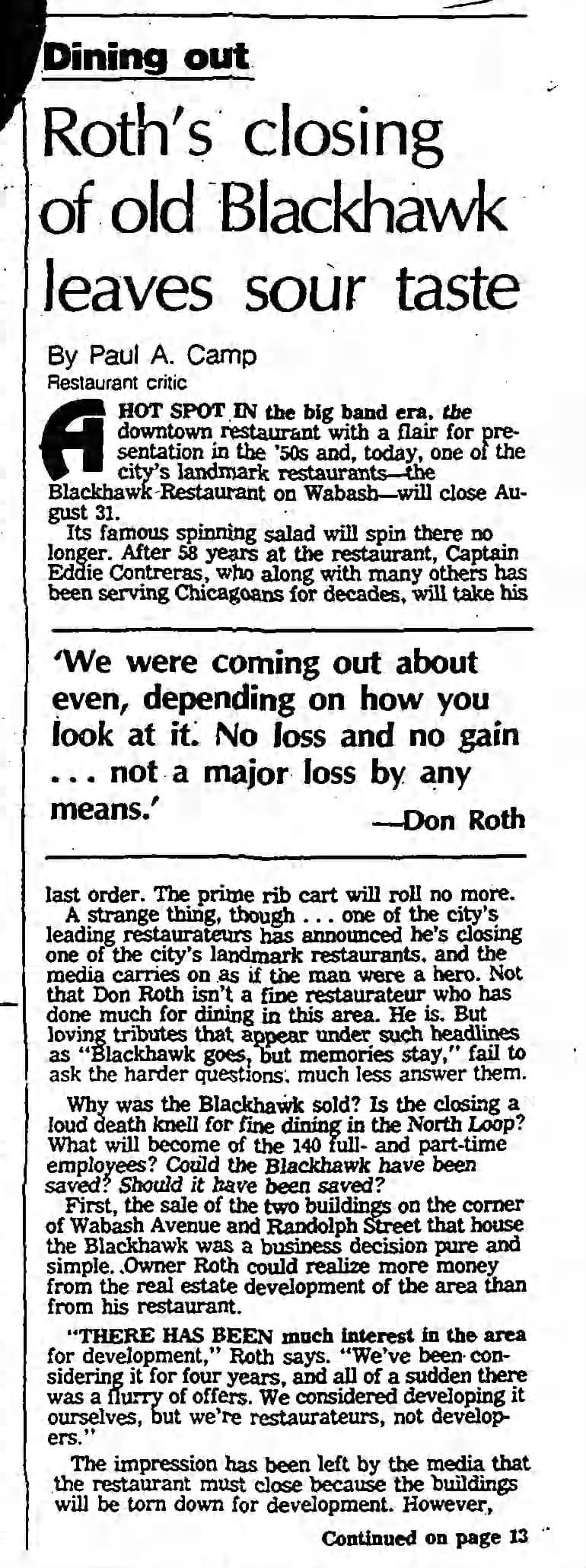
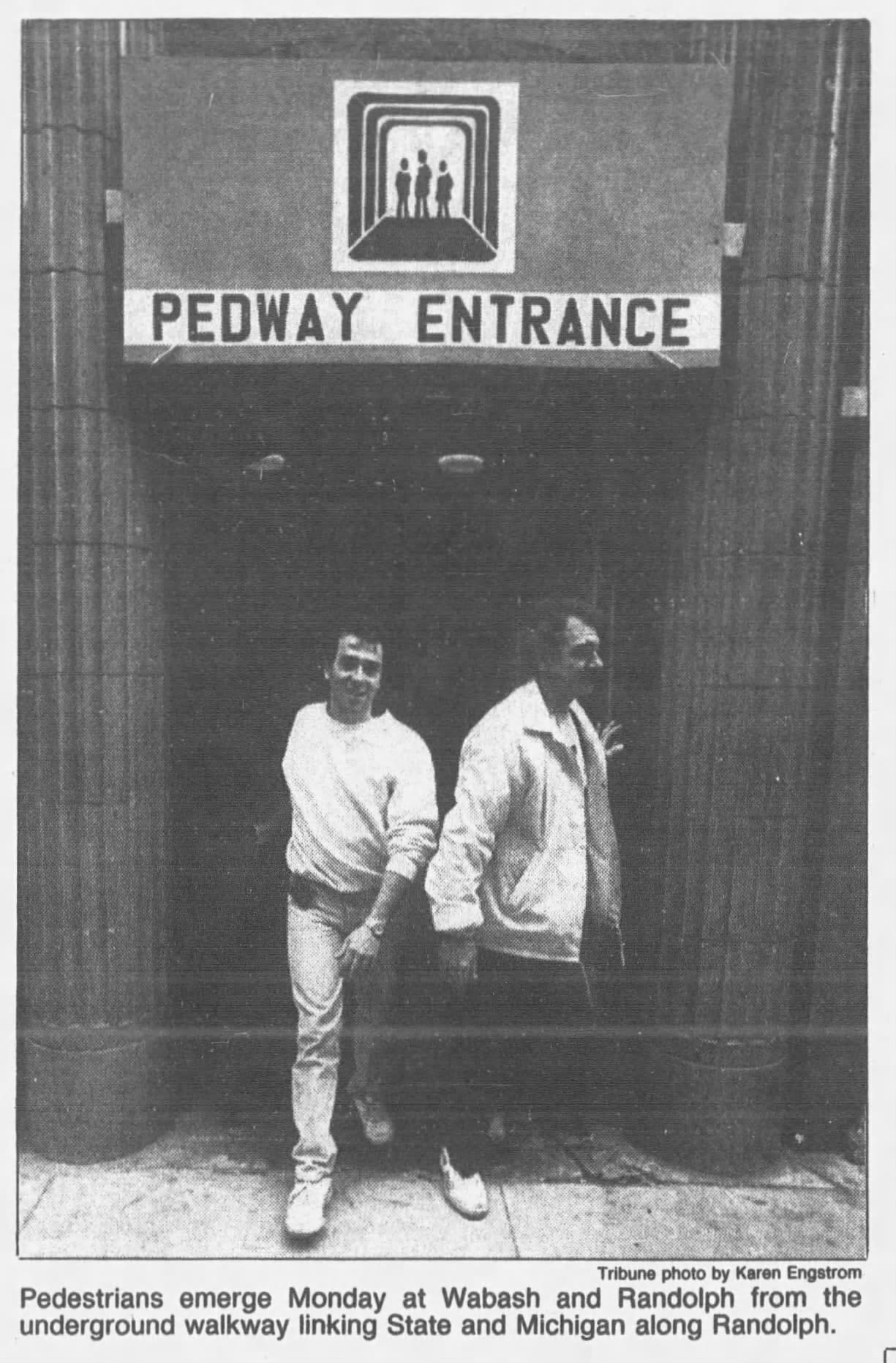
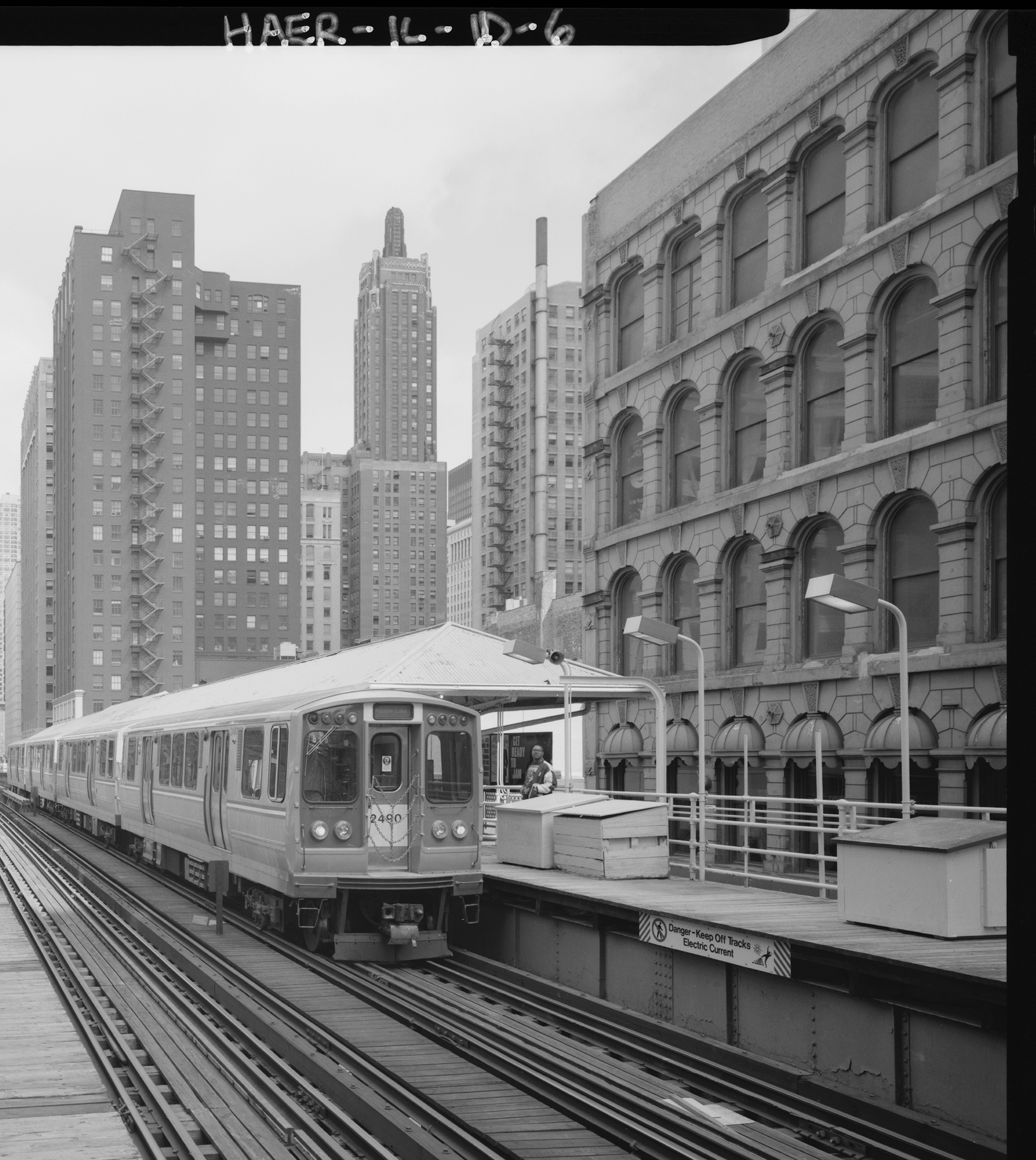
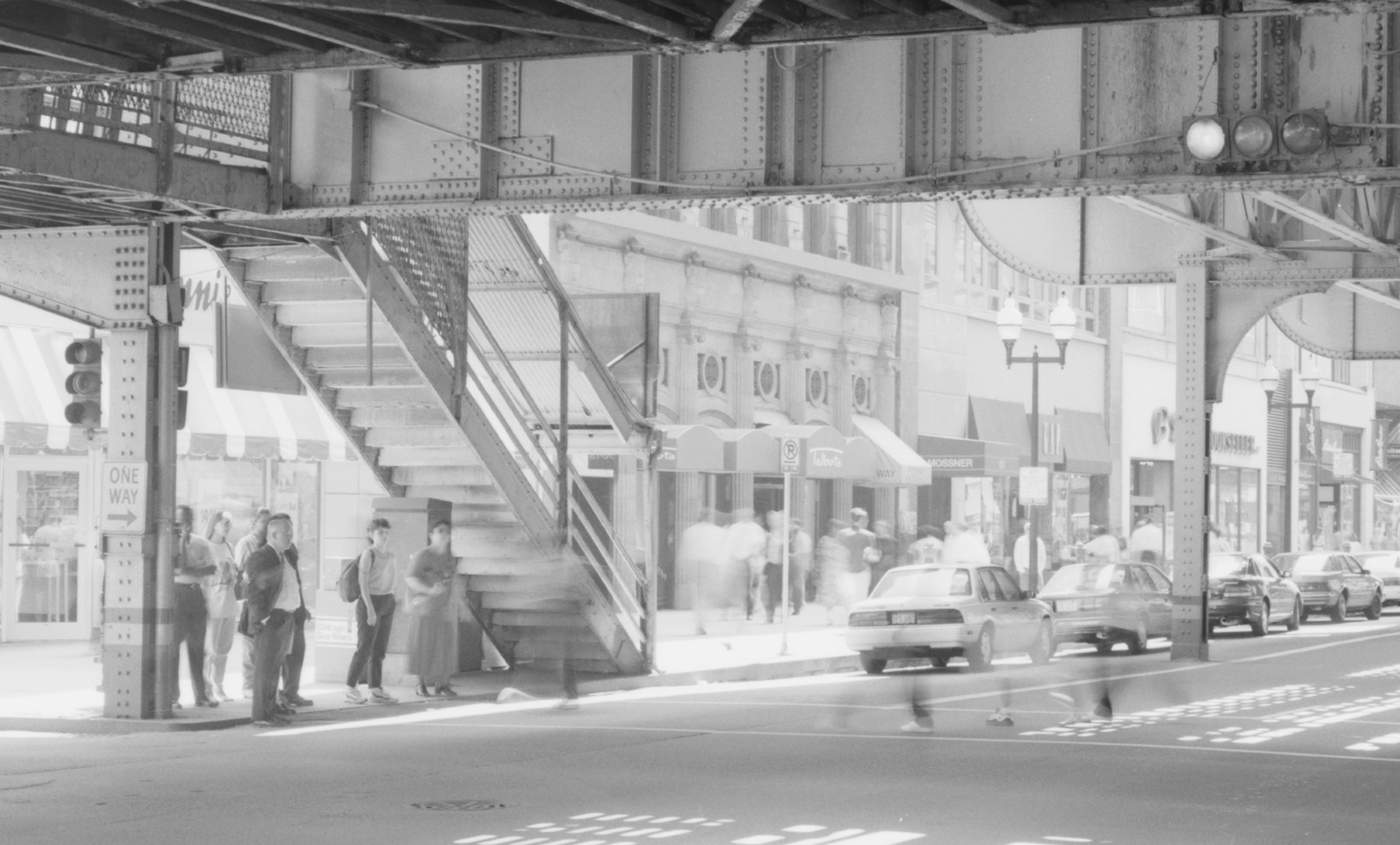
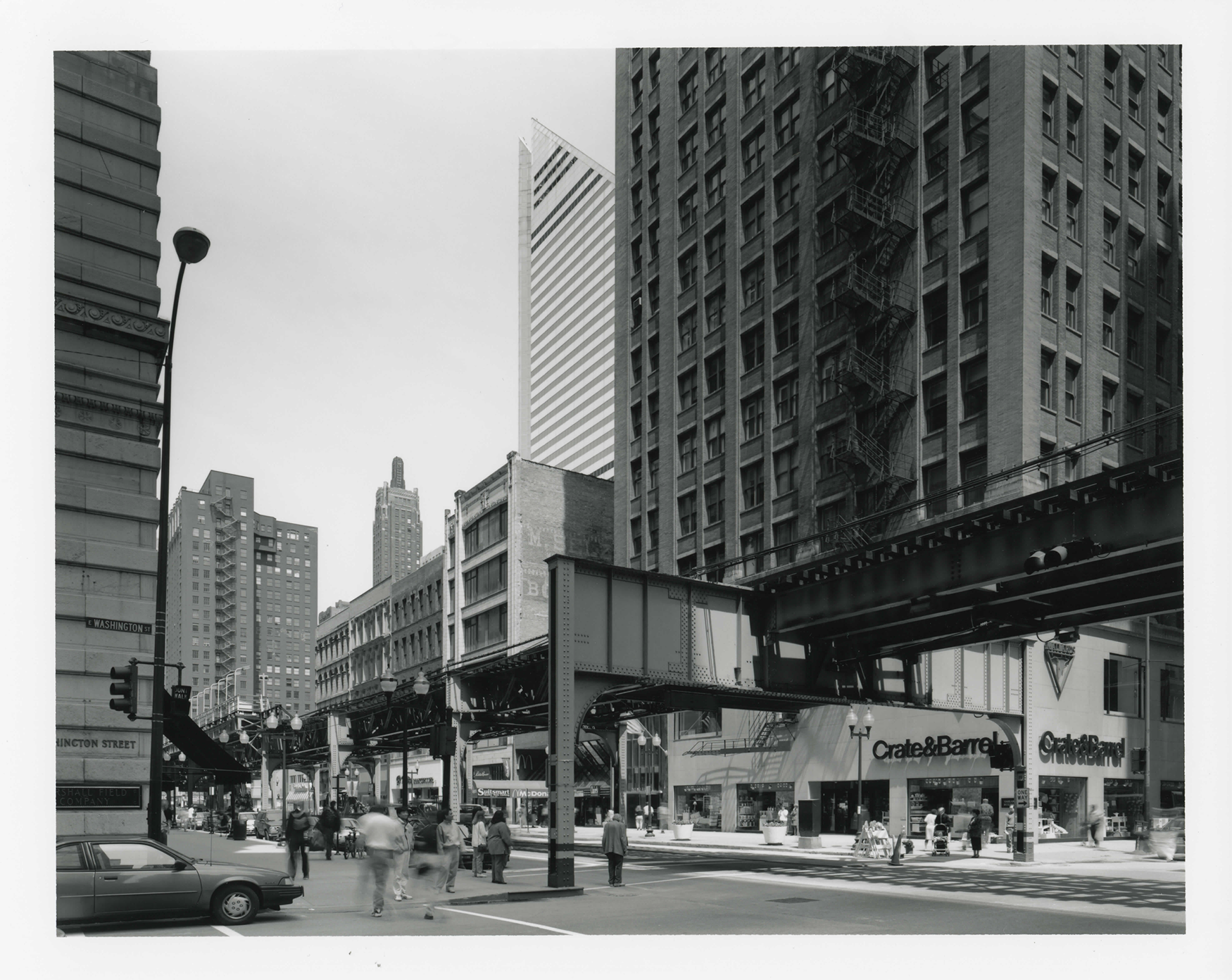
Articles on the building sale, liquidation sale, and closure in 1984 | photo of the pedway entrance in the building, 1988 | 1990s HAER photos, Jack Boucher, Library of Congress | 1998 Bob Thall photo, NRHP Nomination Form
The landmark designation push was a response to the succession of another tranche of post-fire buildings to redevelopment, and that pressure only increased in the 1990s as residential redevelopment in the Loop started to really flourish (the Chicago Loop has been one of the fastest-growing residential neighborhoods in the country over the last couple decades [good]).
Responding to that rising demand, and with the added draw of the new Millennium Park nearby, in the early 2000s developer Mesa Development proposed a 57-story residential tower here–the Heritage at Millennium Park–that would overlook the Chicago Cultural Center, Millennium Park, and Lake Michigan. Rather than level the entire site, the developer chose to preserve the facades of the four post-fire buildings on Wabash, including the Blackhawk (I wonder if by keeping the facade they could still tap the Historic Tax Credit program because it contributes to the NRHP district?). Mesa demolished everything except their facades, which were then affixed to the new building, basically as ornamentation to decorate its parking podium.
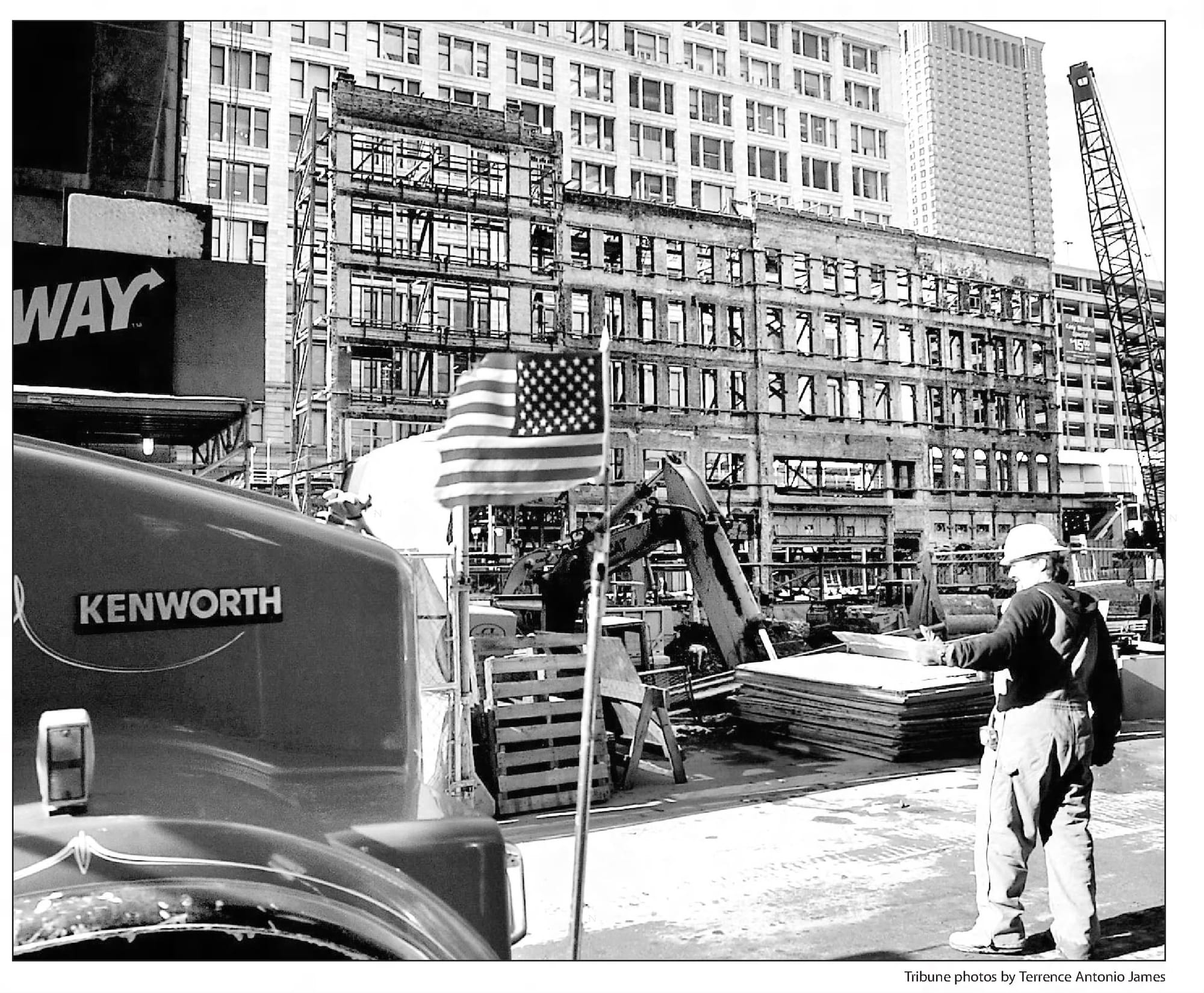
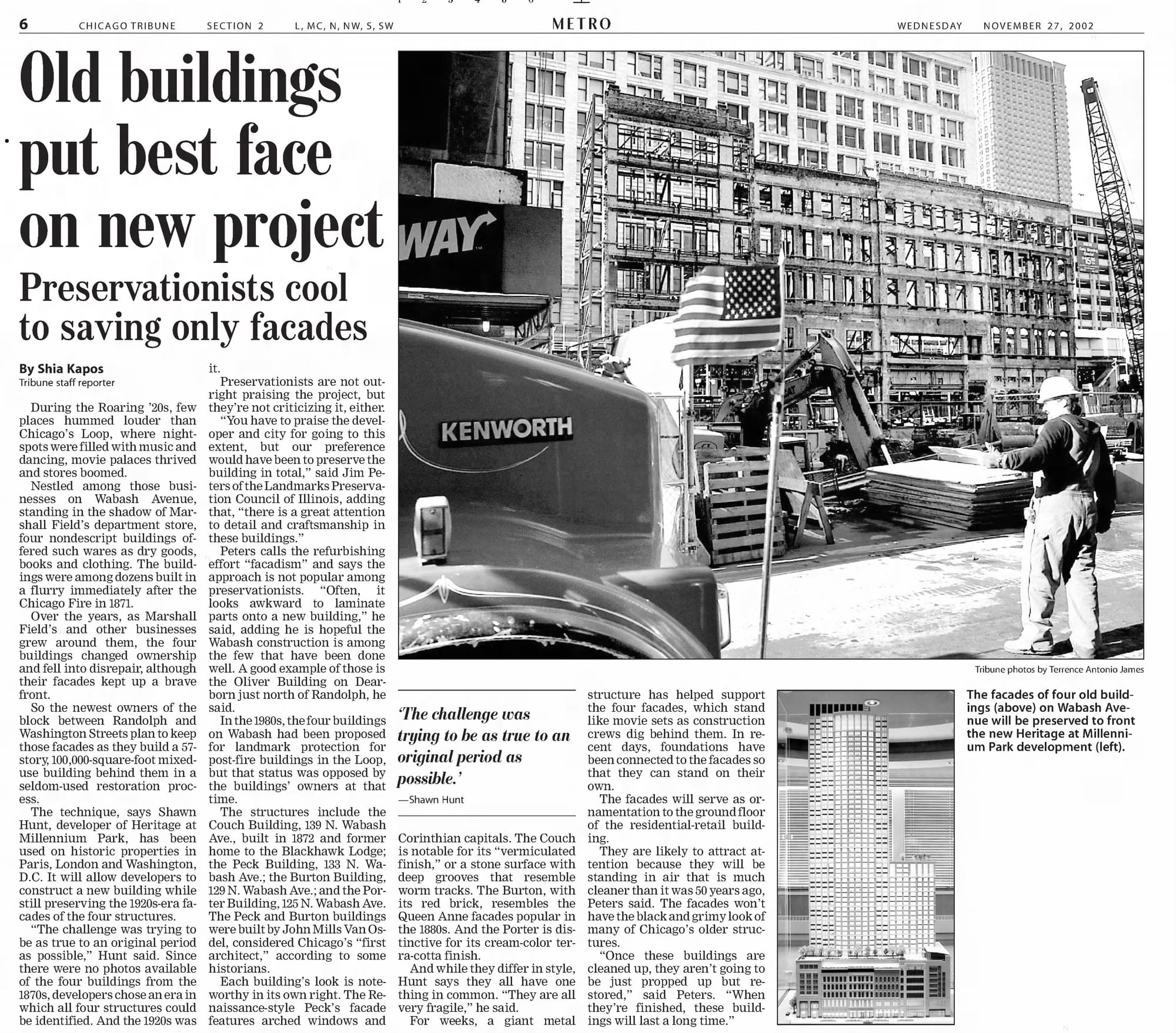
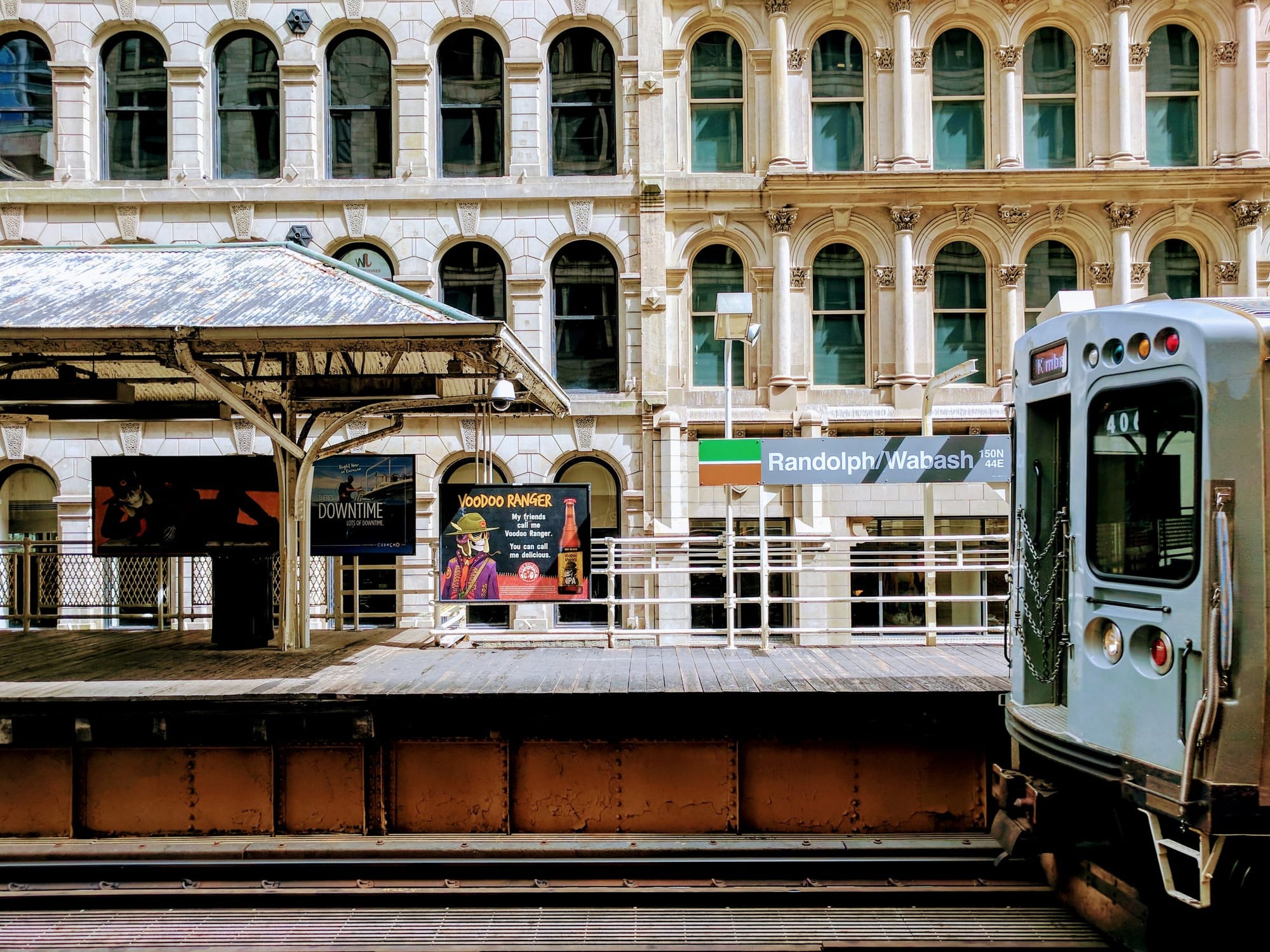
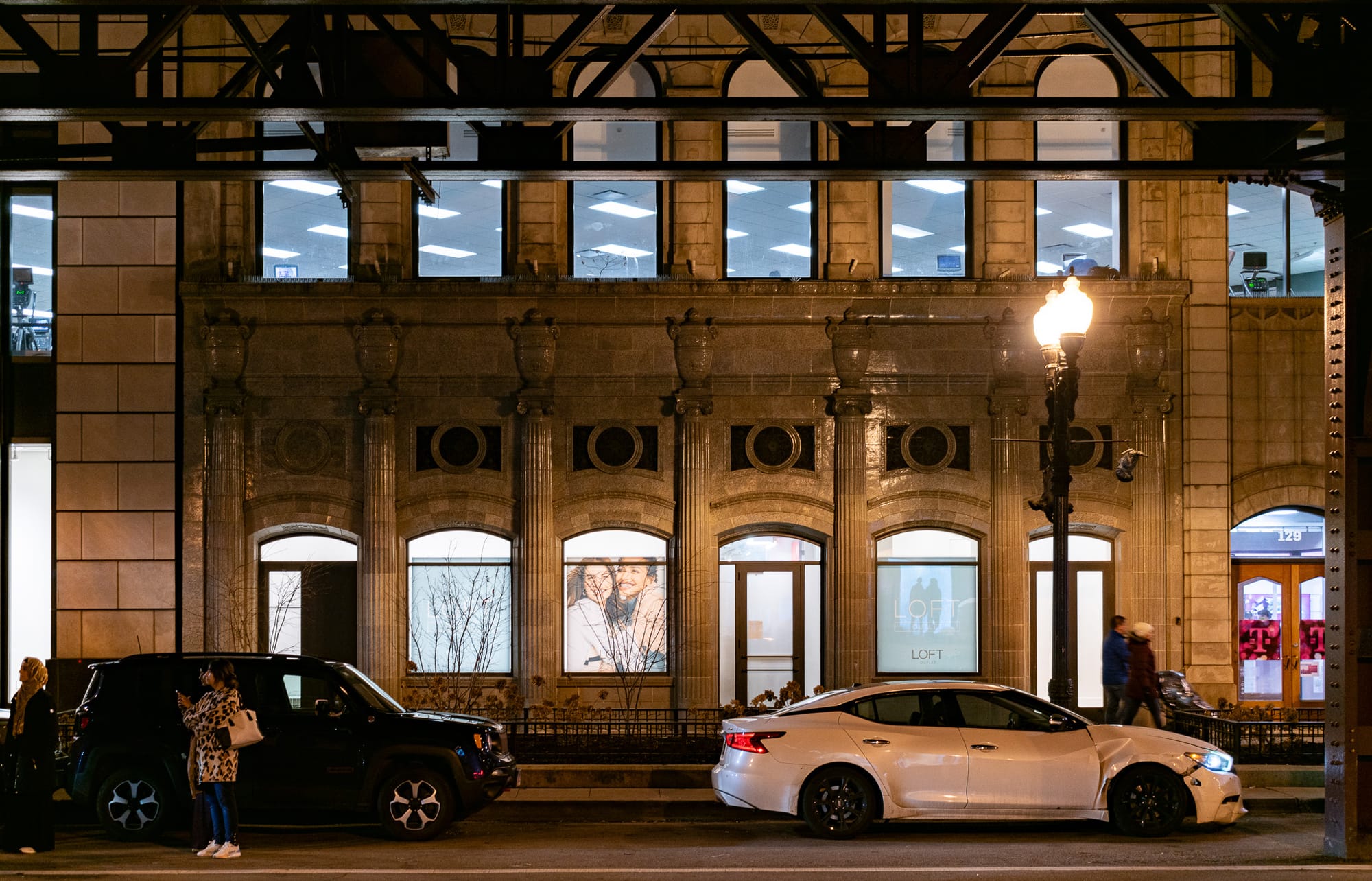
2002 photo and article about the facadectomy | 2010s CTA photo | 2024 photo
Designed by SCB, with McGuire Igleski & Associates working as the preservation consultants, the Heritage on Millennium Park opened in 2005. They did a pretty decent job here—it’s way better than your standard lifeless parking podium—although if you walk into LOFT looking for an echo of the Blackhawk’s jazz era, you’ll be disappointed.
Production Files
Further reading:
- NRHP Nomination Form for the Loop Retail Historic District
- Chicago Tribune, "Power Tower"
- Chicago Tribune, "Beloved Blackhawk restaurant lives on in UIC exhibit — including the spinning salad bowl"
- On the bowling tournament
- The Coon-Sanders Nighthawks: the band that made radio famous by Fred Edmiston
- "How Radio Helped to Build Big Bands" in the Downbeat, 1955

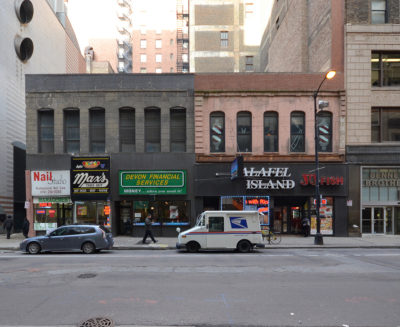

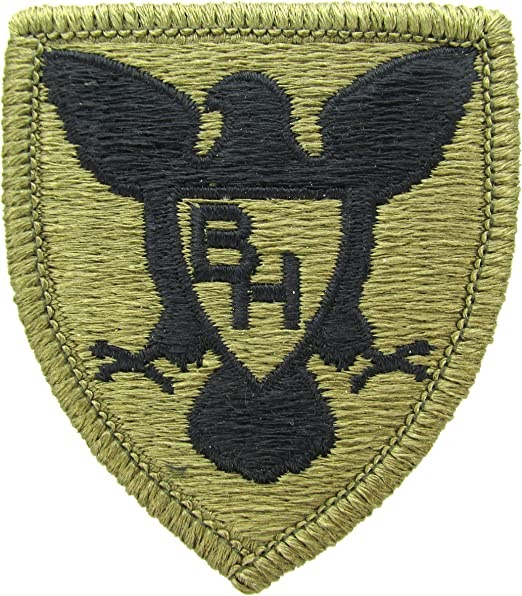
Here's a video I made of the block in fire insurance maps from 1886 to 1950.
and in photo form.
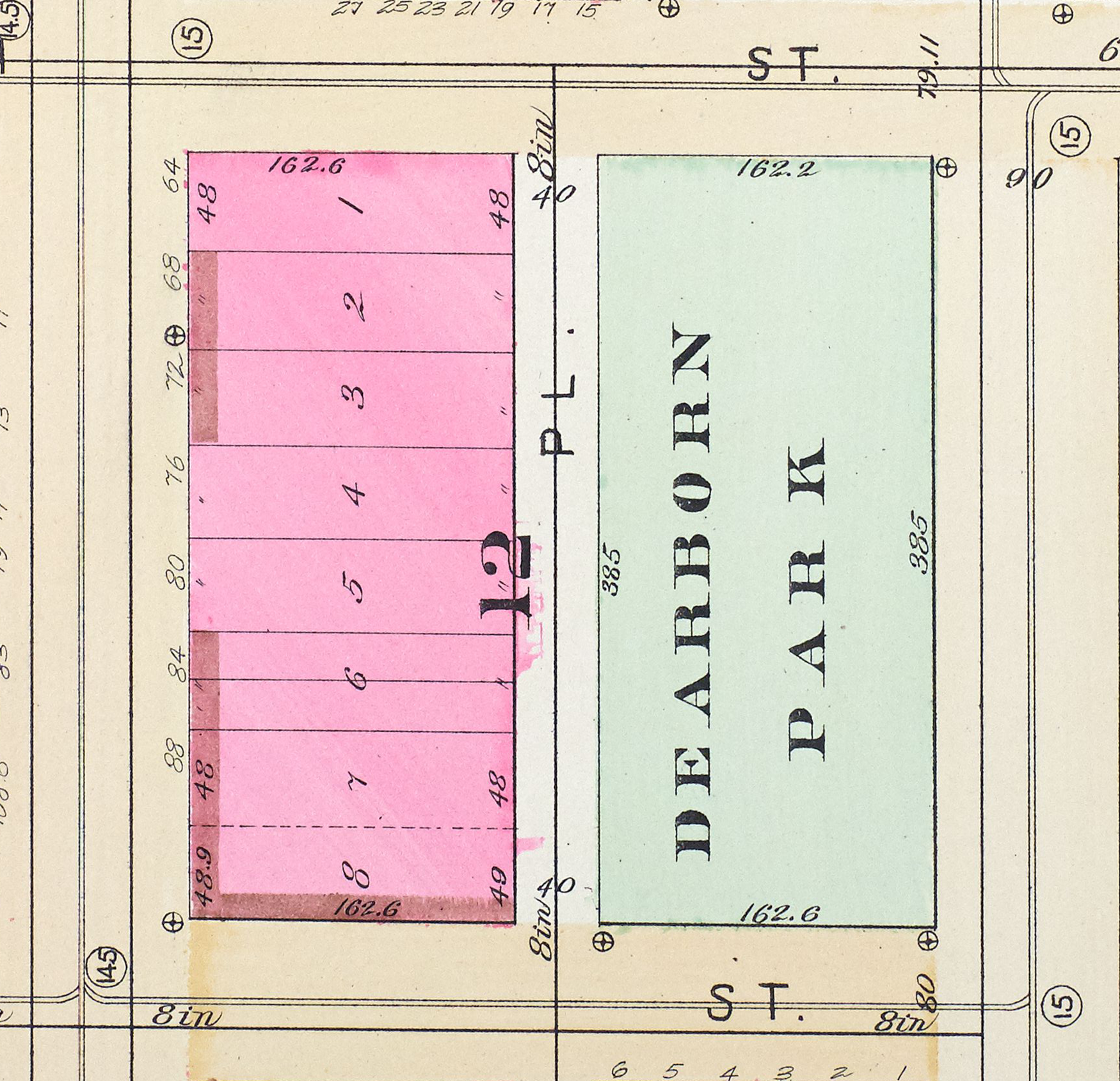
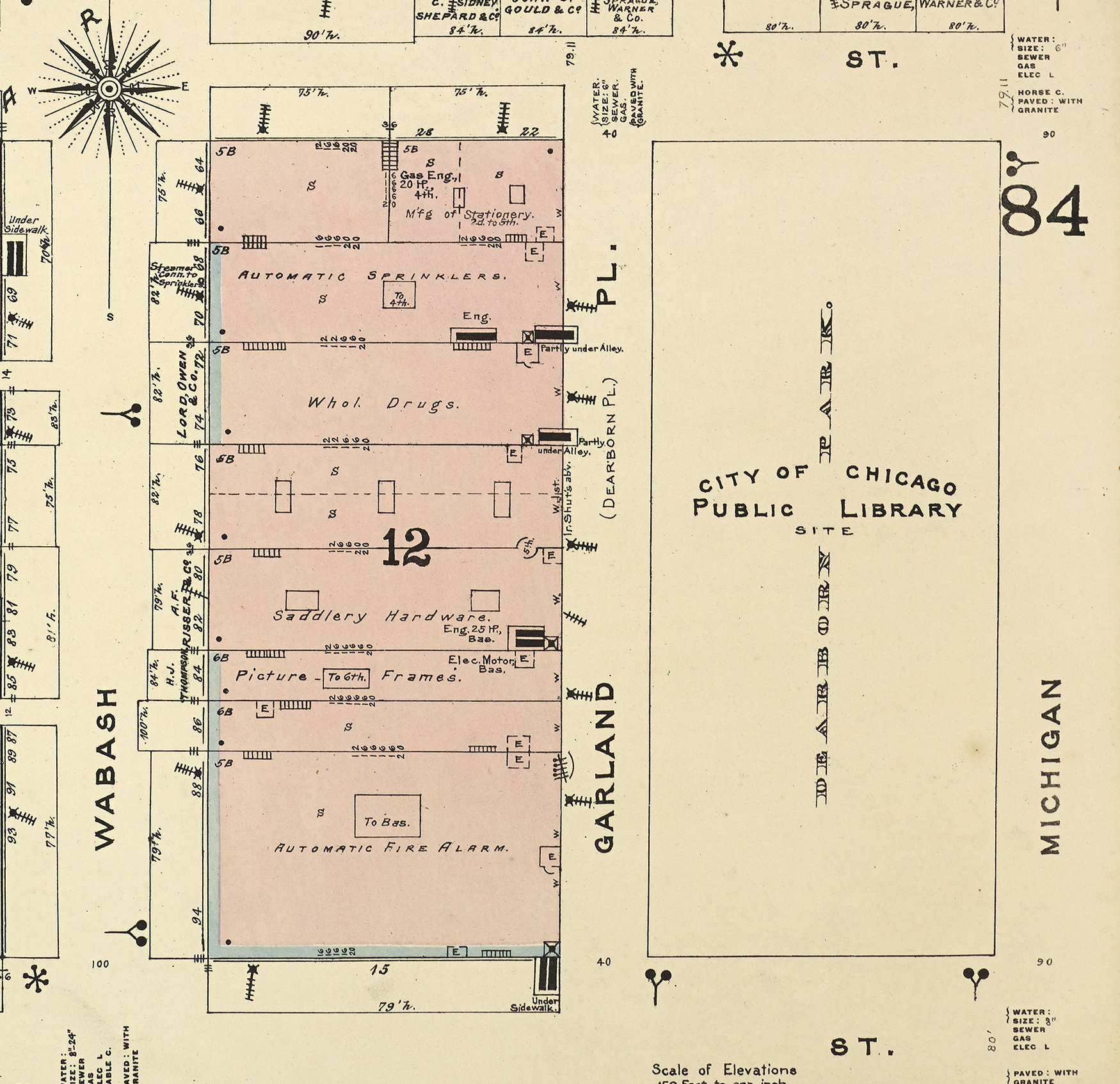
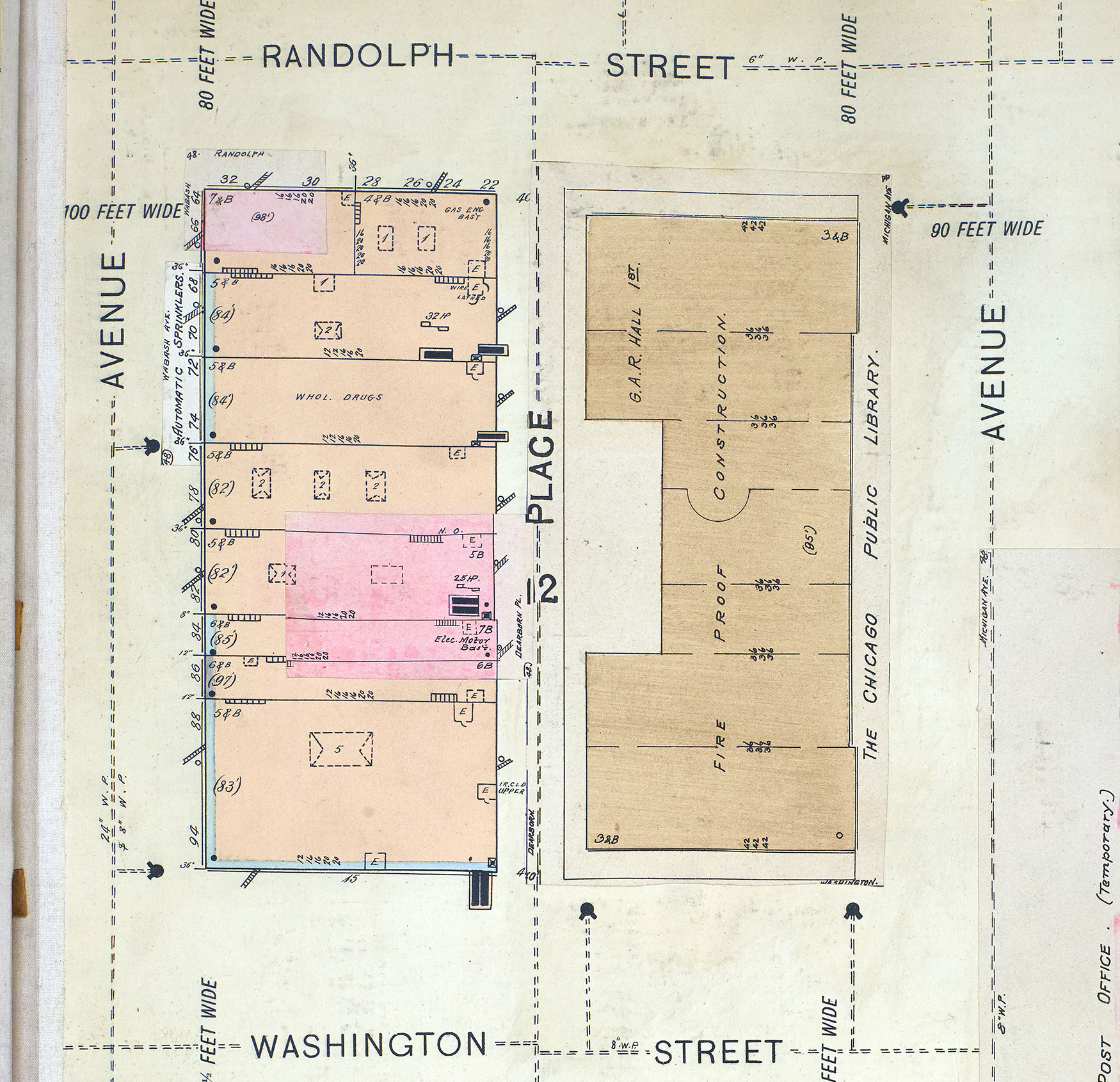
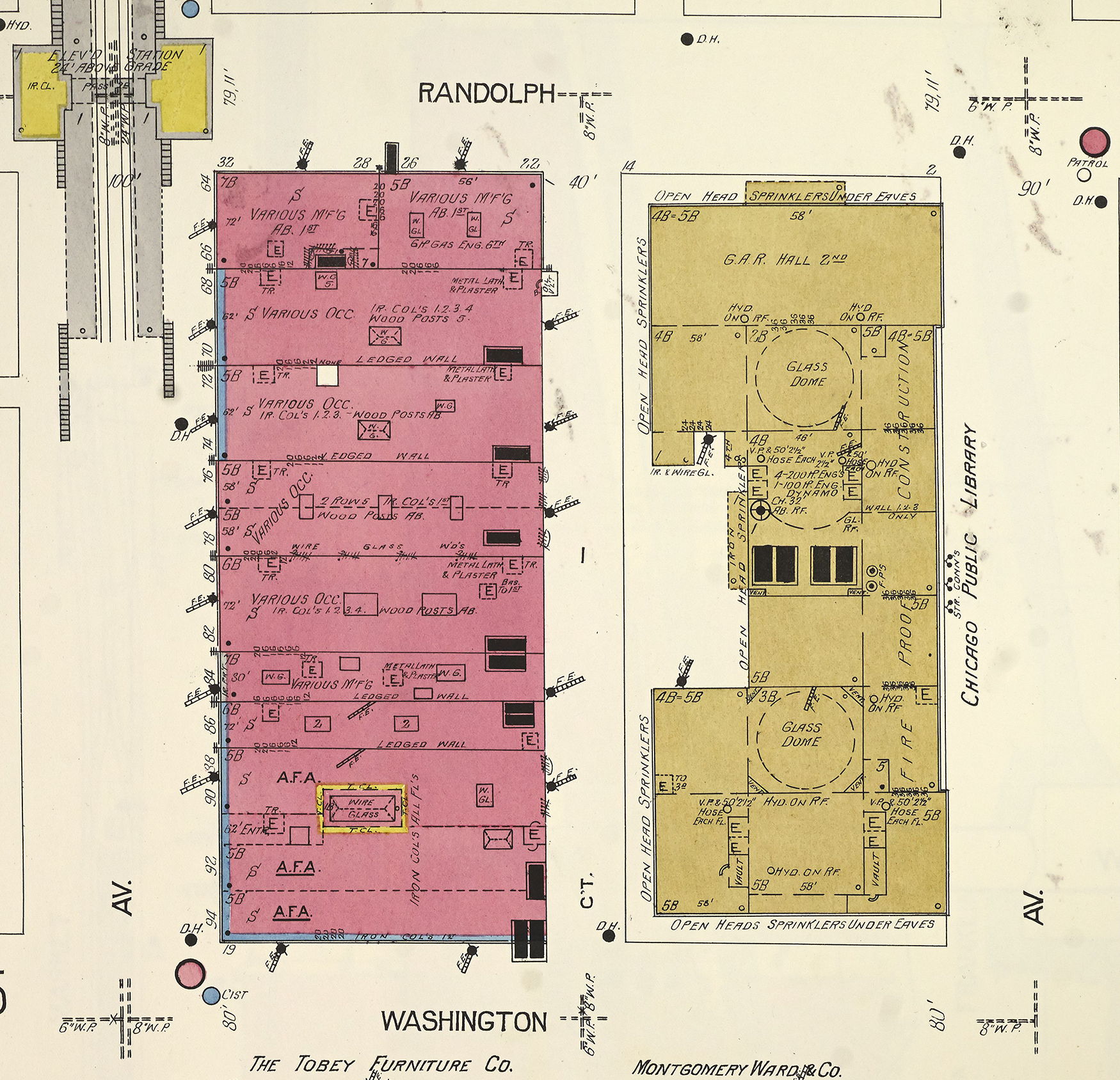
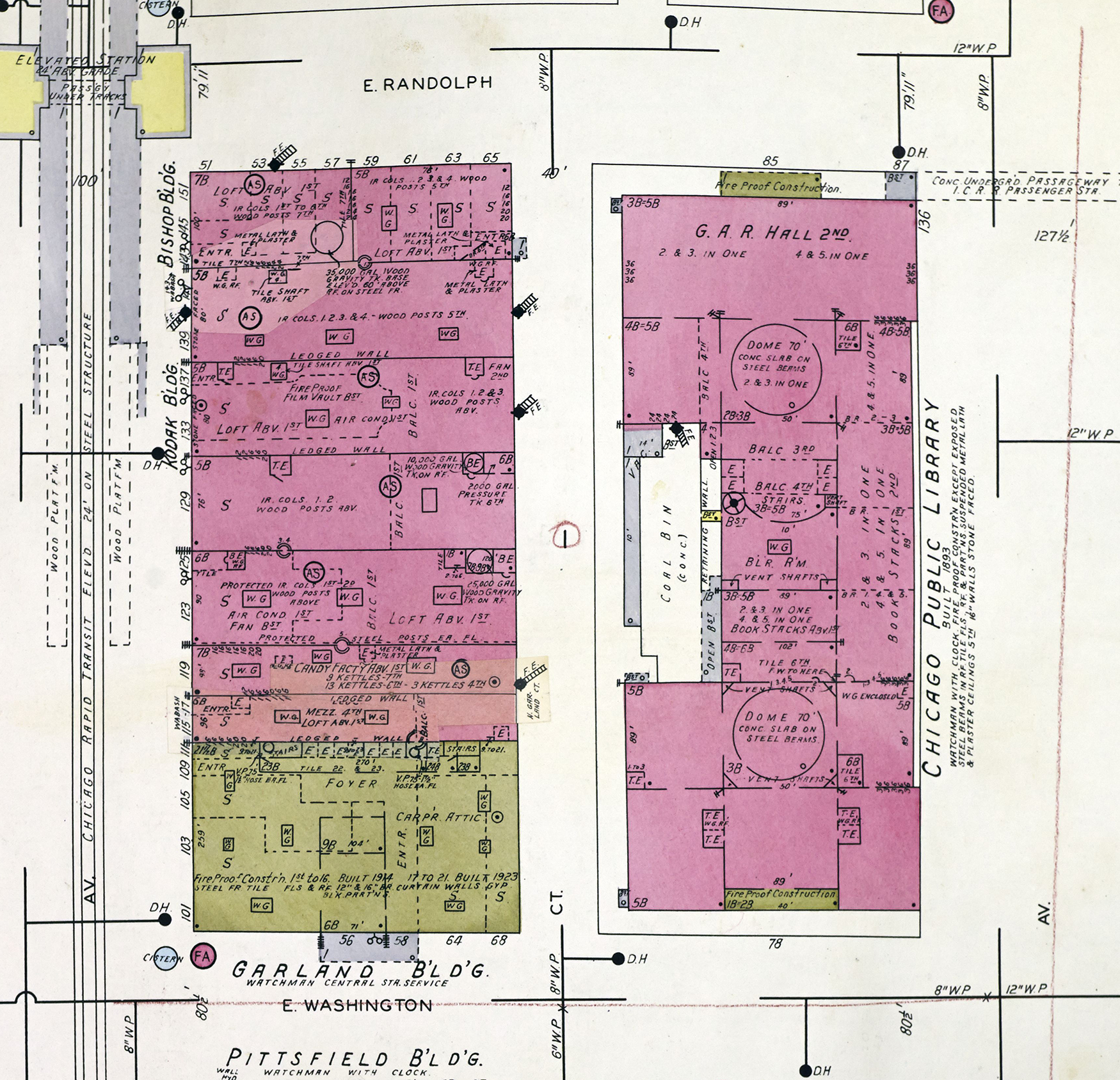
1886 | 1891 | 1901 | 1906 | 1950
Some of Vitzthum & Burns other buildings (in a sweet little acknowledgement, John J. Burns named one of his kids Thomas Vitzthum Burns [and that kid ended up having TWENTY ONE KIDS OF HIS OWN]).
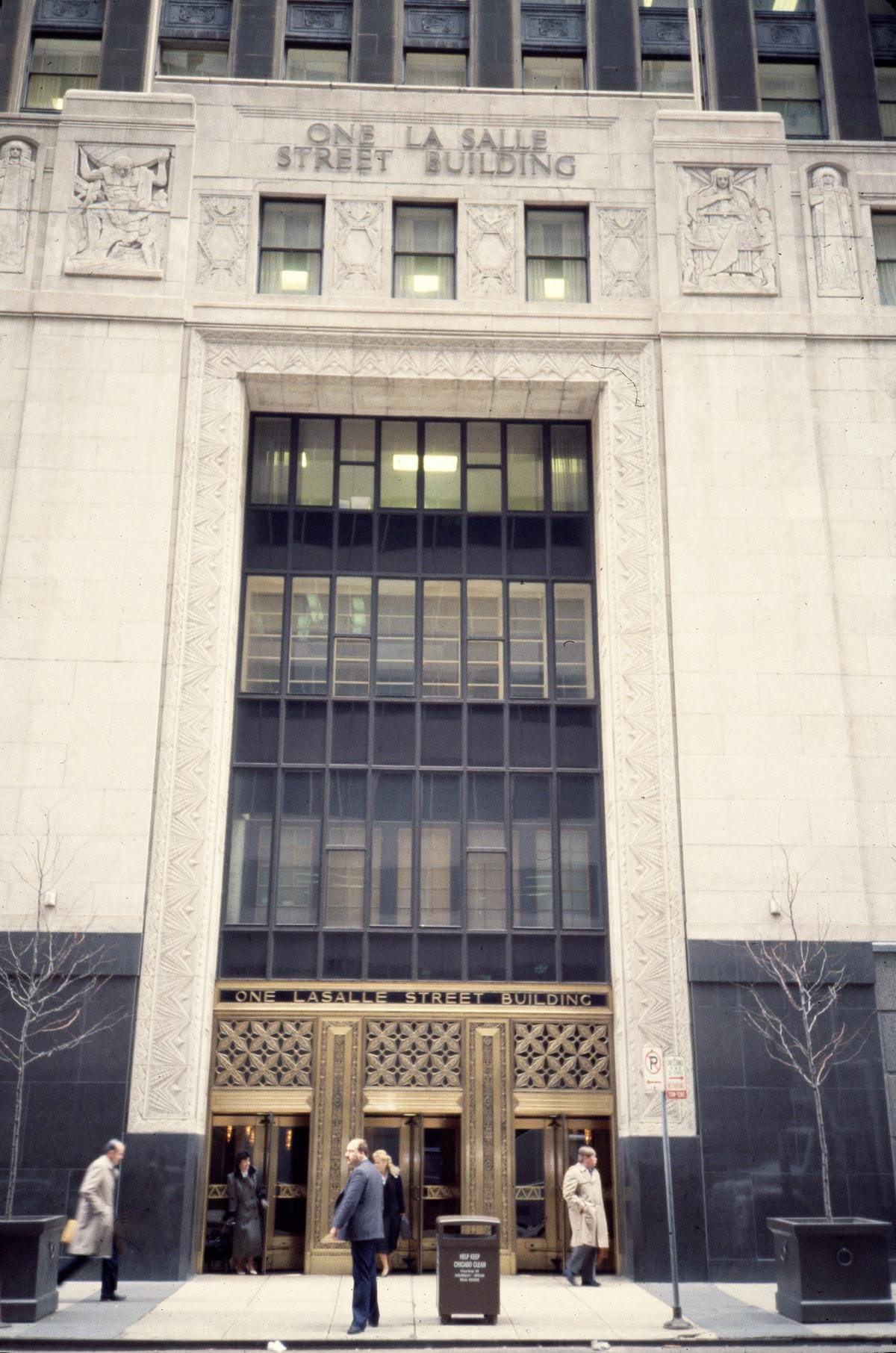
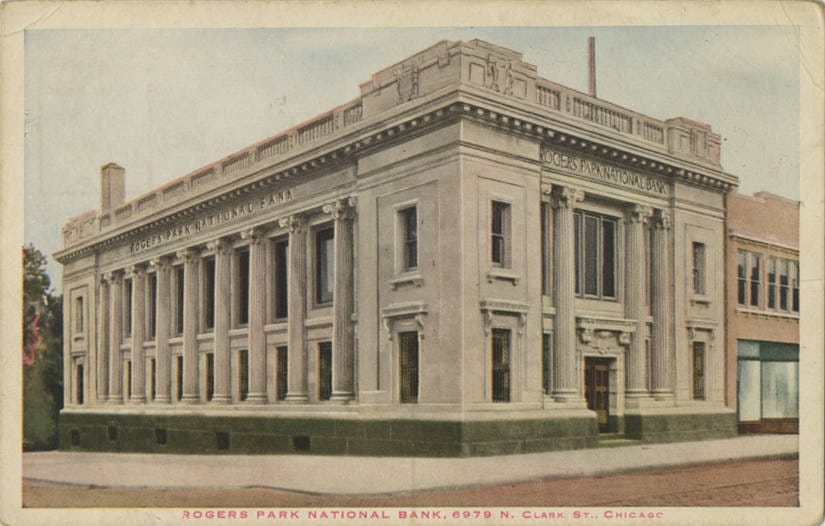
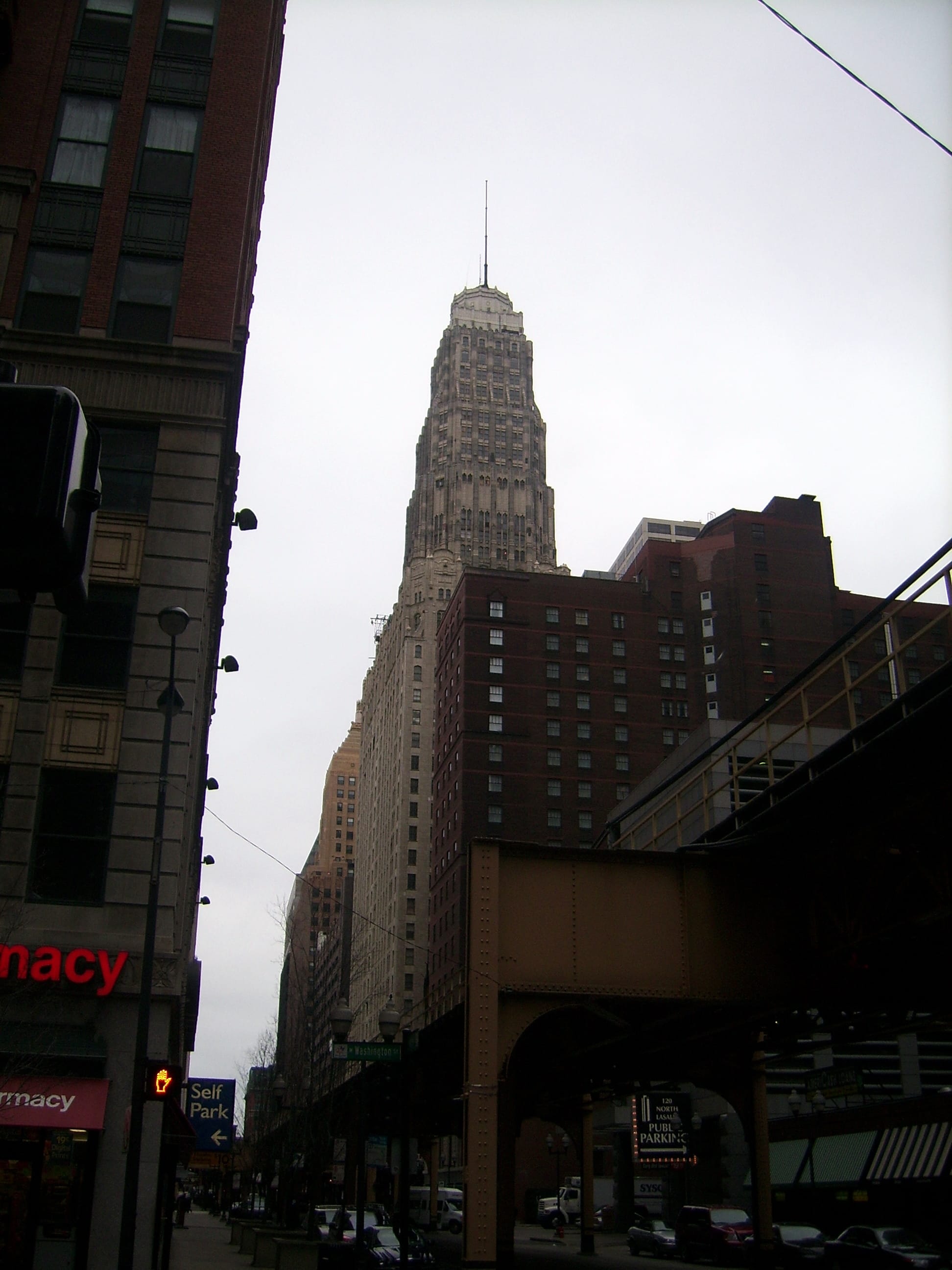
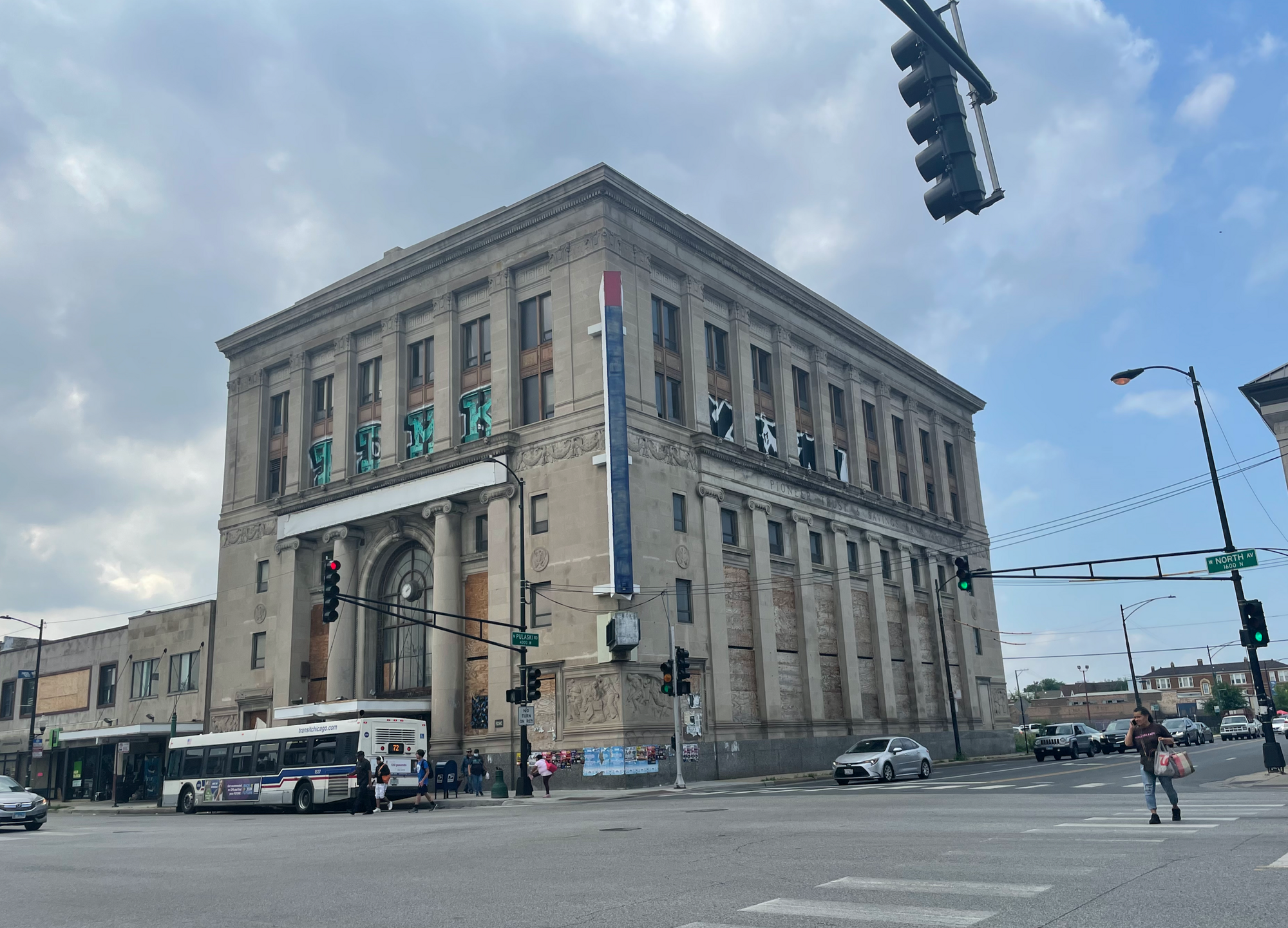
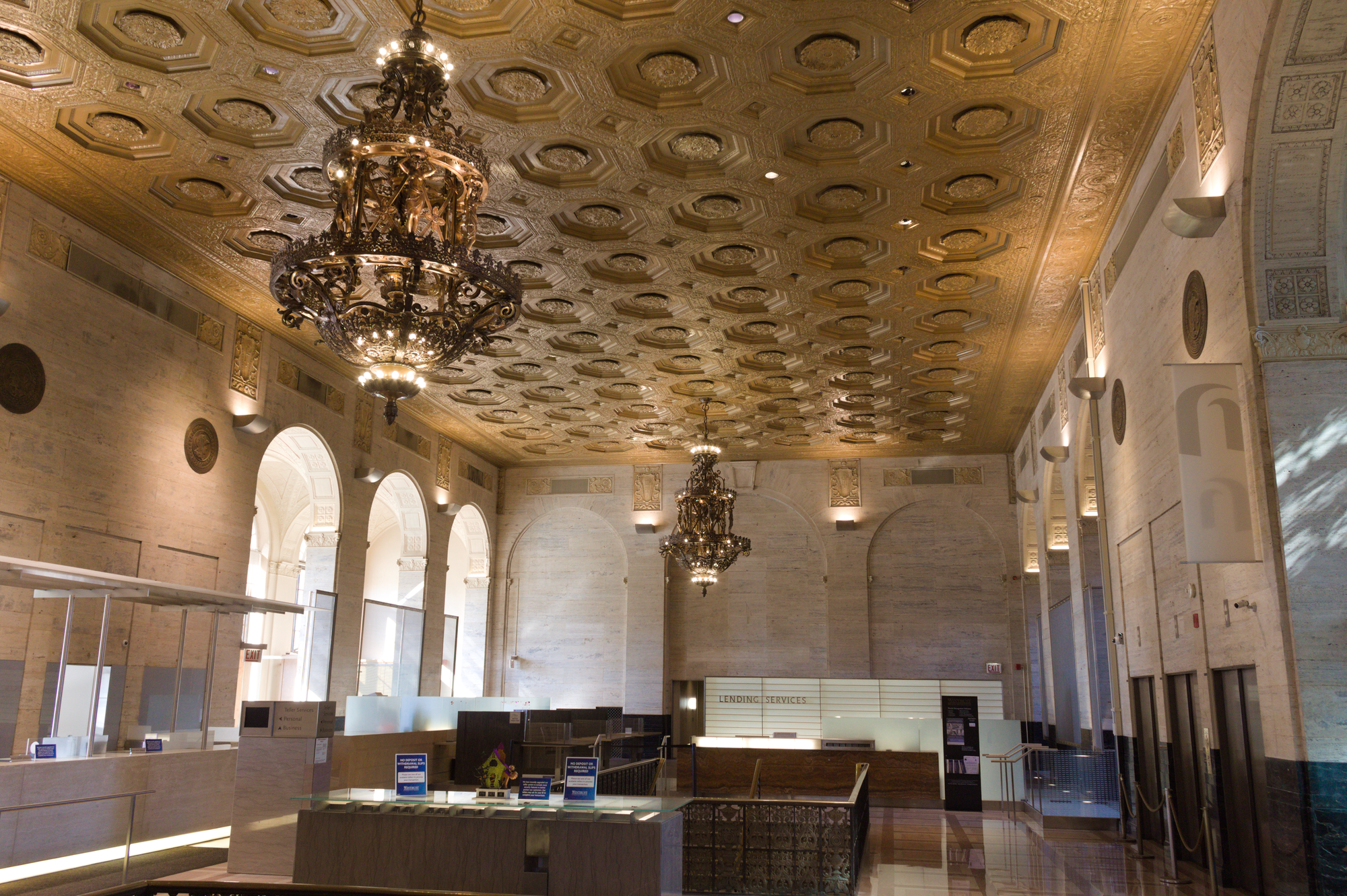
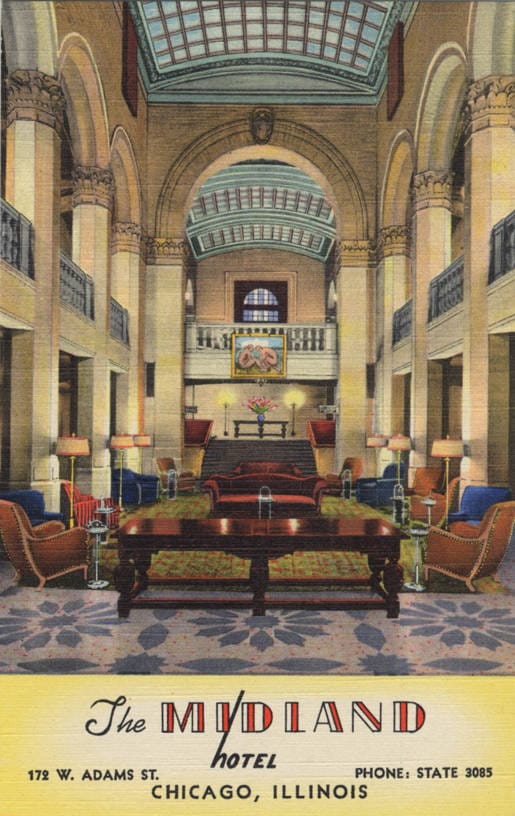
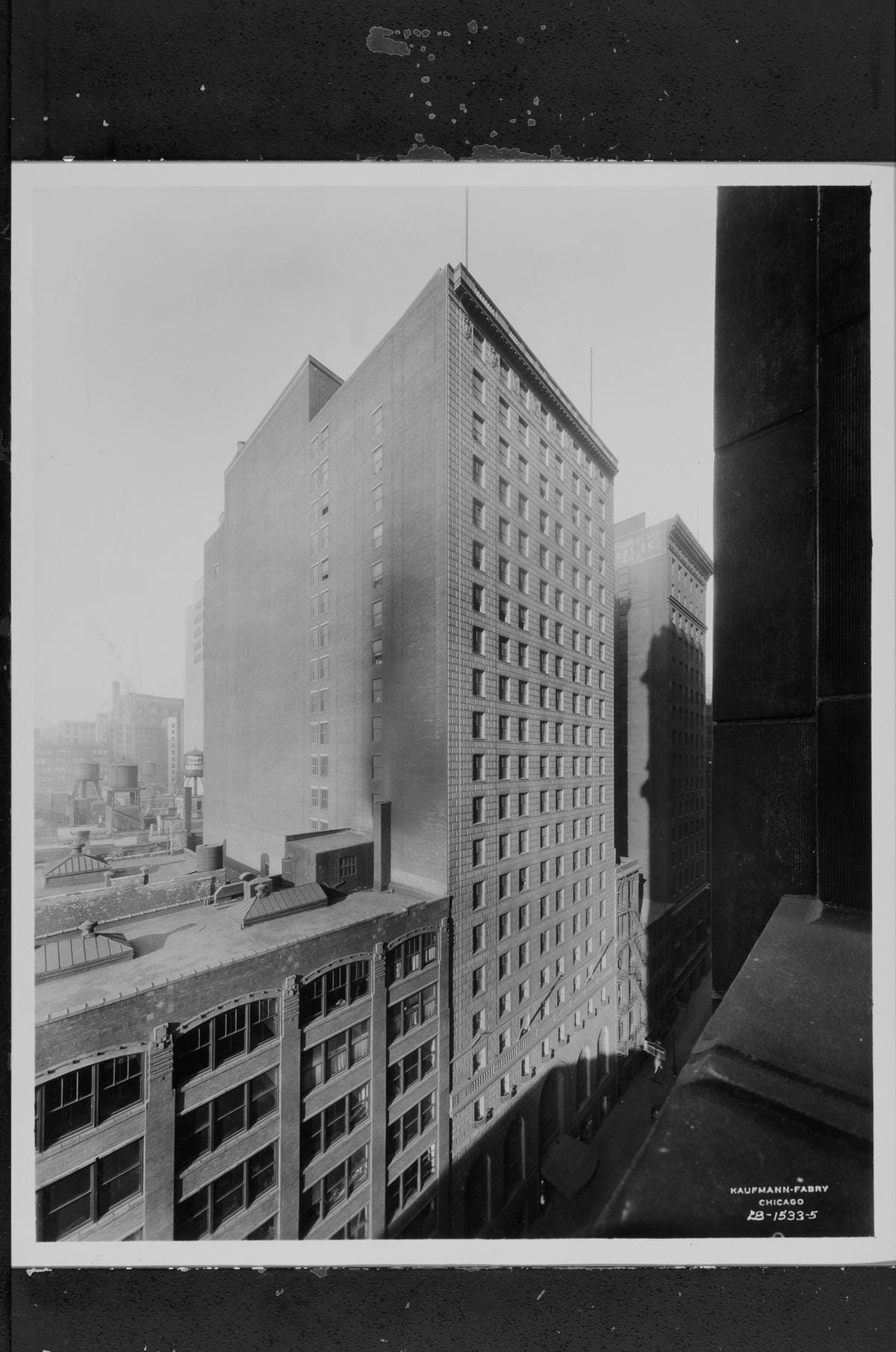
One North LaSalle, C. William Brubaker, UIC via Chicago Collections | Rogers Park National Bank, Curt Teich Postcard Archive, Newberry Library | Steuben Club Building, Wikimedia Commons | Pioneer Trust & Savings Bank, Wikimedia Commons | Hyde Park Bank, Wikimedia Commons | Midland Hotel Lobby, Curt Teich Postcard Archives, the Newberry Library via Wikimedia Commons | The Midland Hotel, UIC Library via Chicago Collections
A few frames of the Blackhawk marquee in a video from 1940.
Let's See Chicago, 1940, Library of Congress
You want recipes? I got recipes.
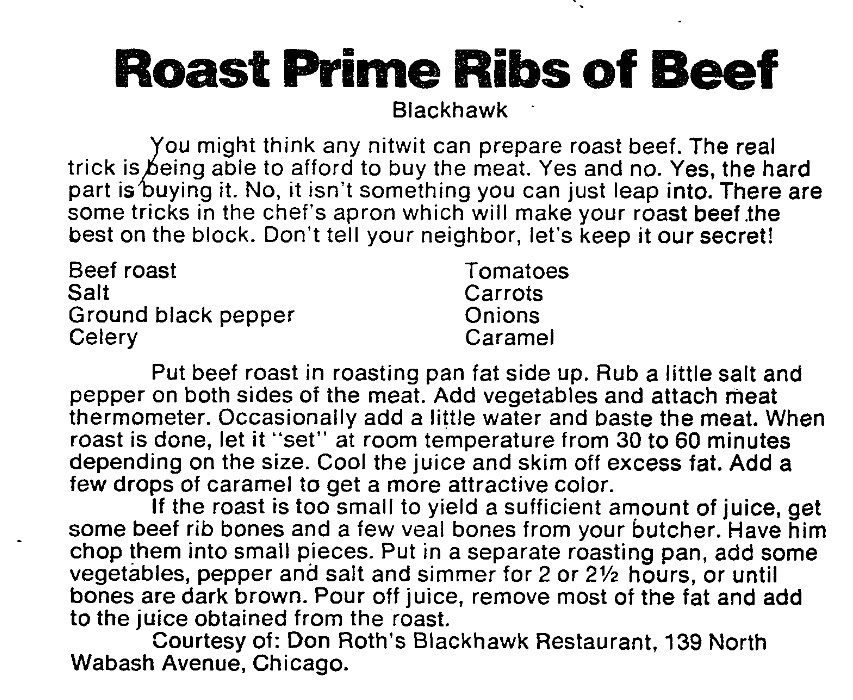
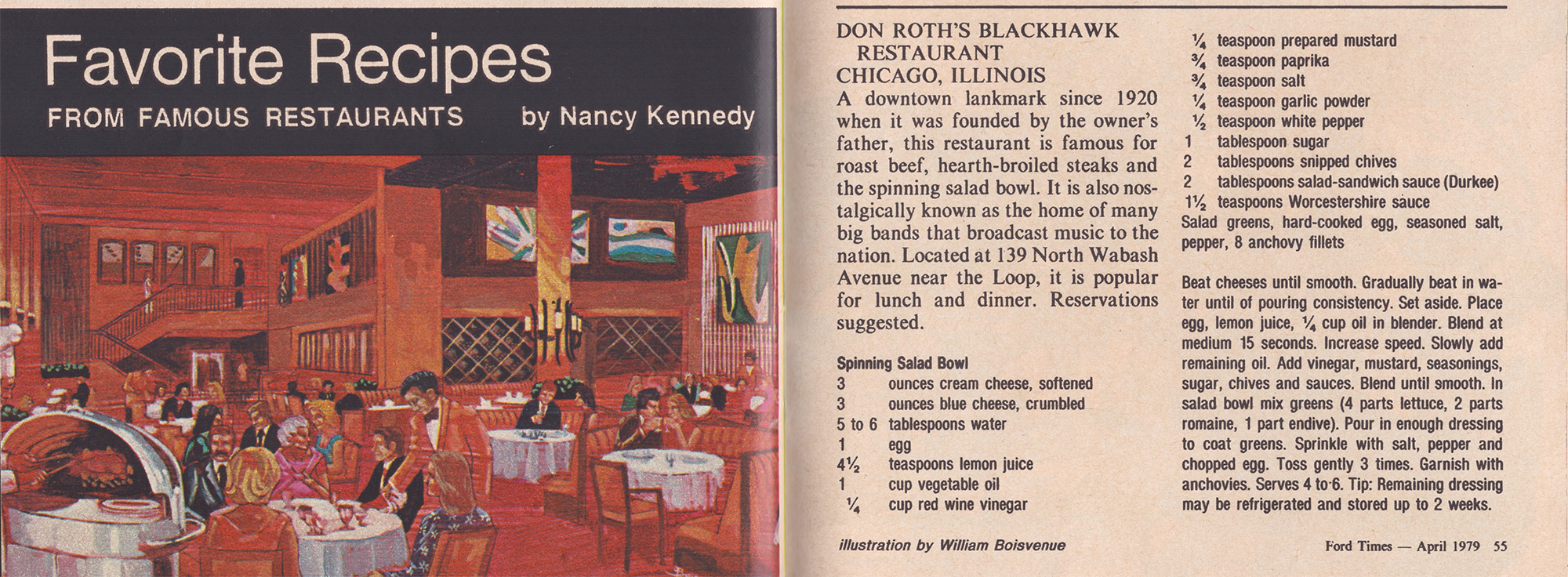
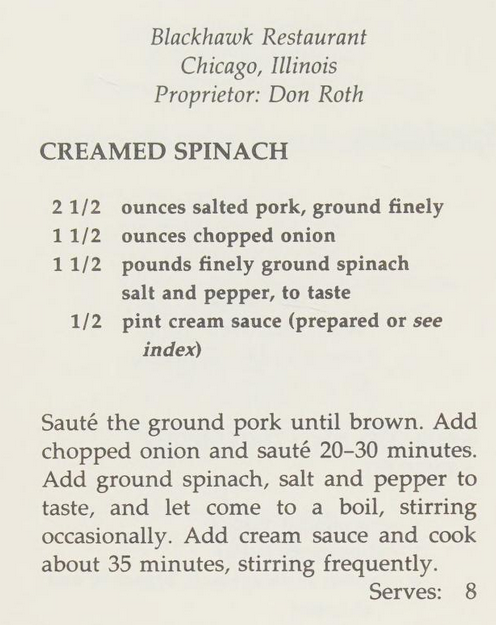
Prime rib recipe, 1974 | Spinning Salad Bowl recipe, 1979 | Creamed spinach recipe, 1980
They had this pretty racist section of the restaurant called the–using the less-offensive name–the "Indian Room".
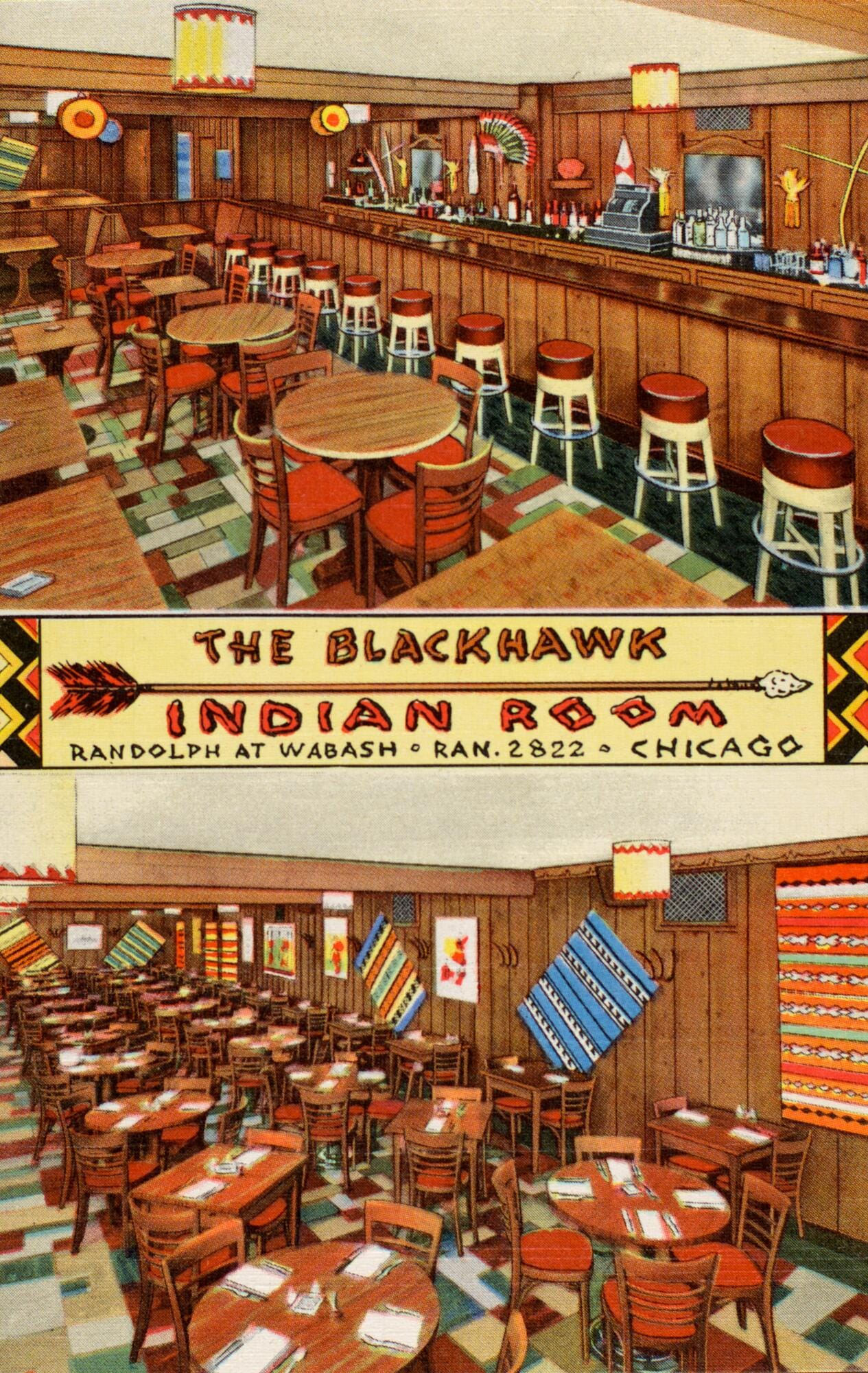
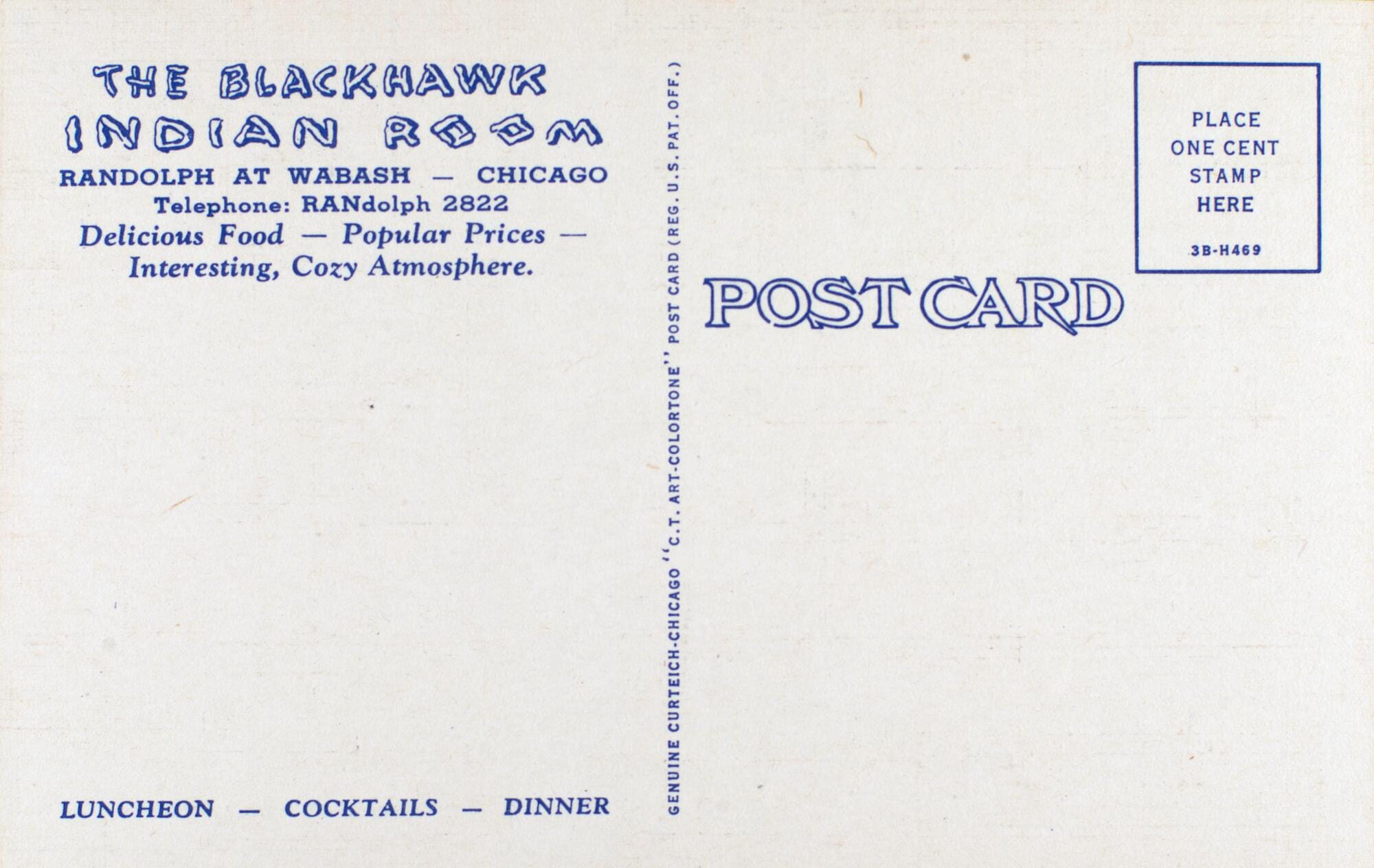
A few other random articles, including about the people who visited, what the ads to lease space in the building looked like, and how under Don Roth the space also showed art (at least by Keith Morrison and Ellen Lanyon).
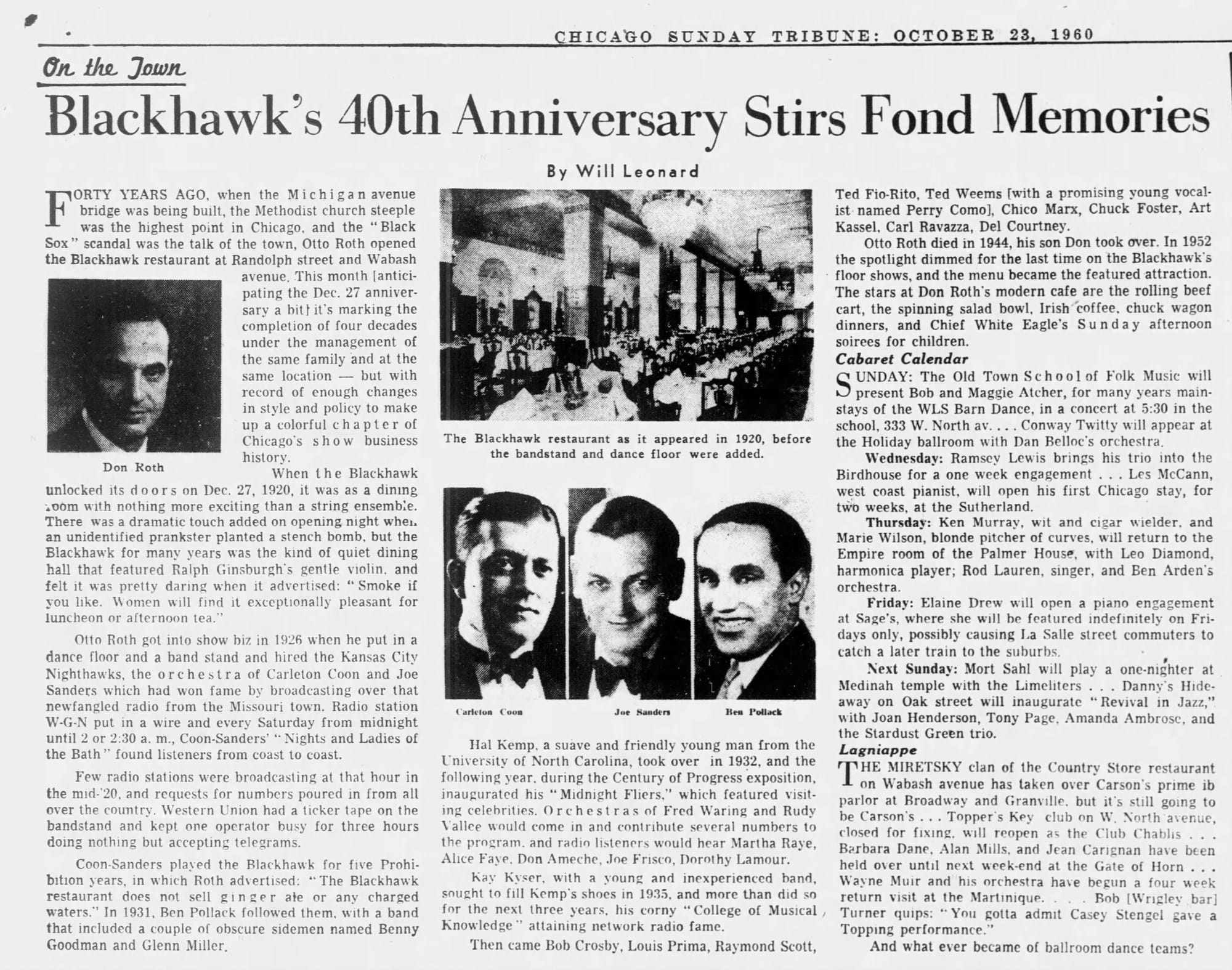
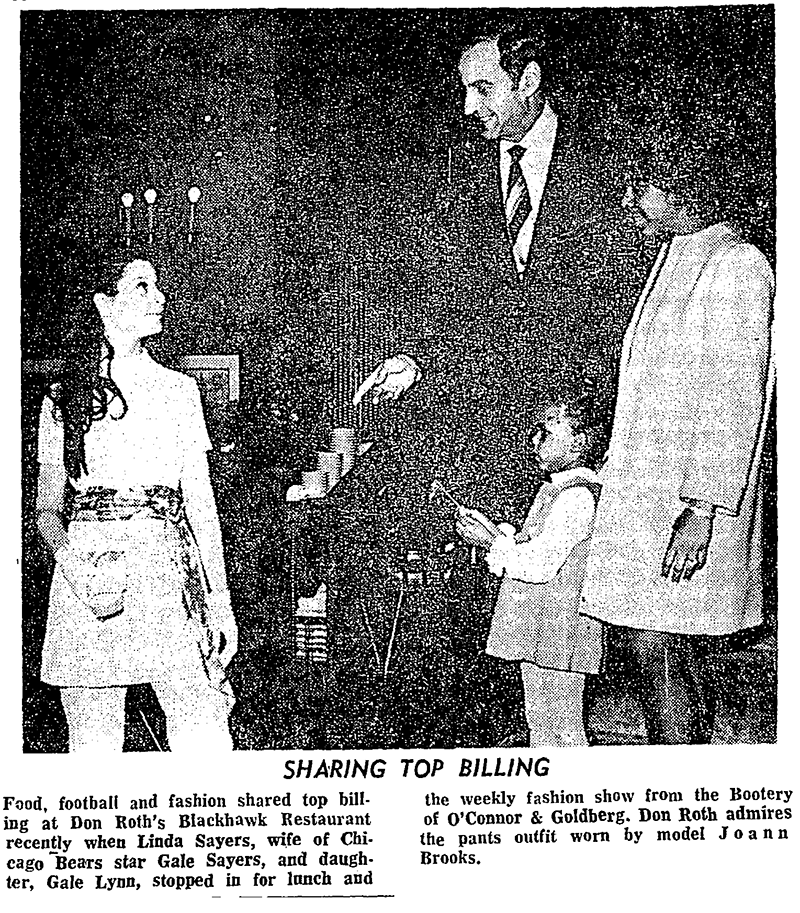
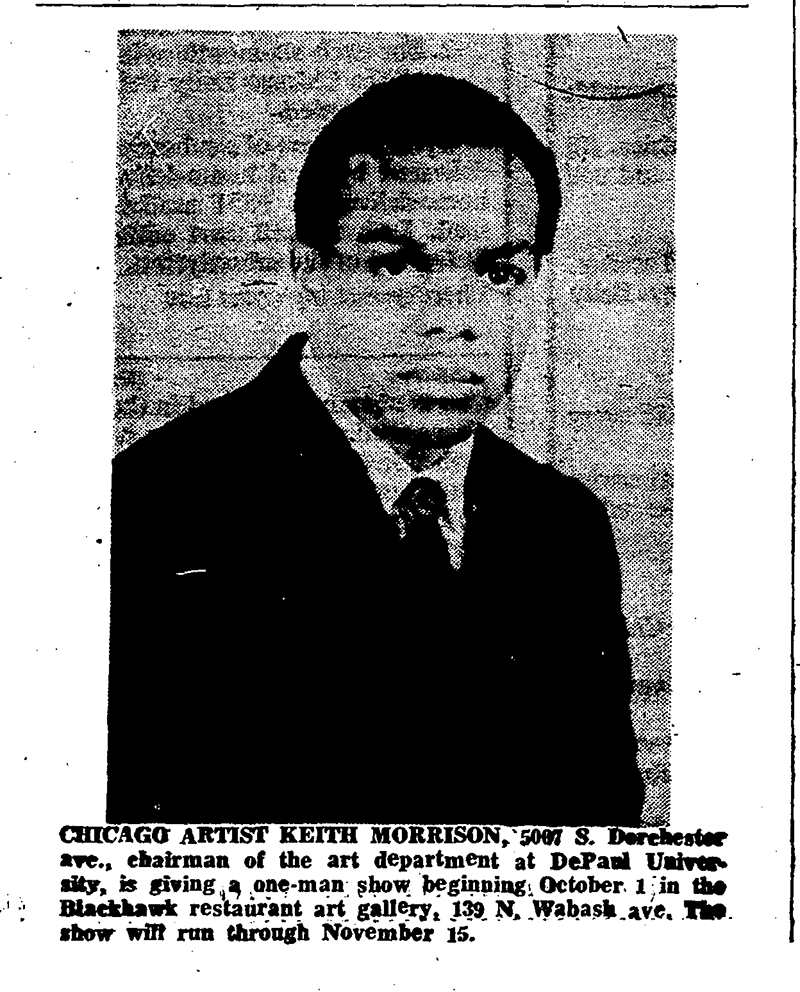
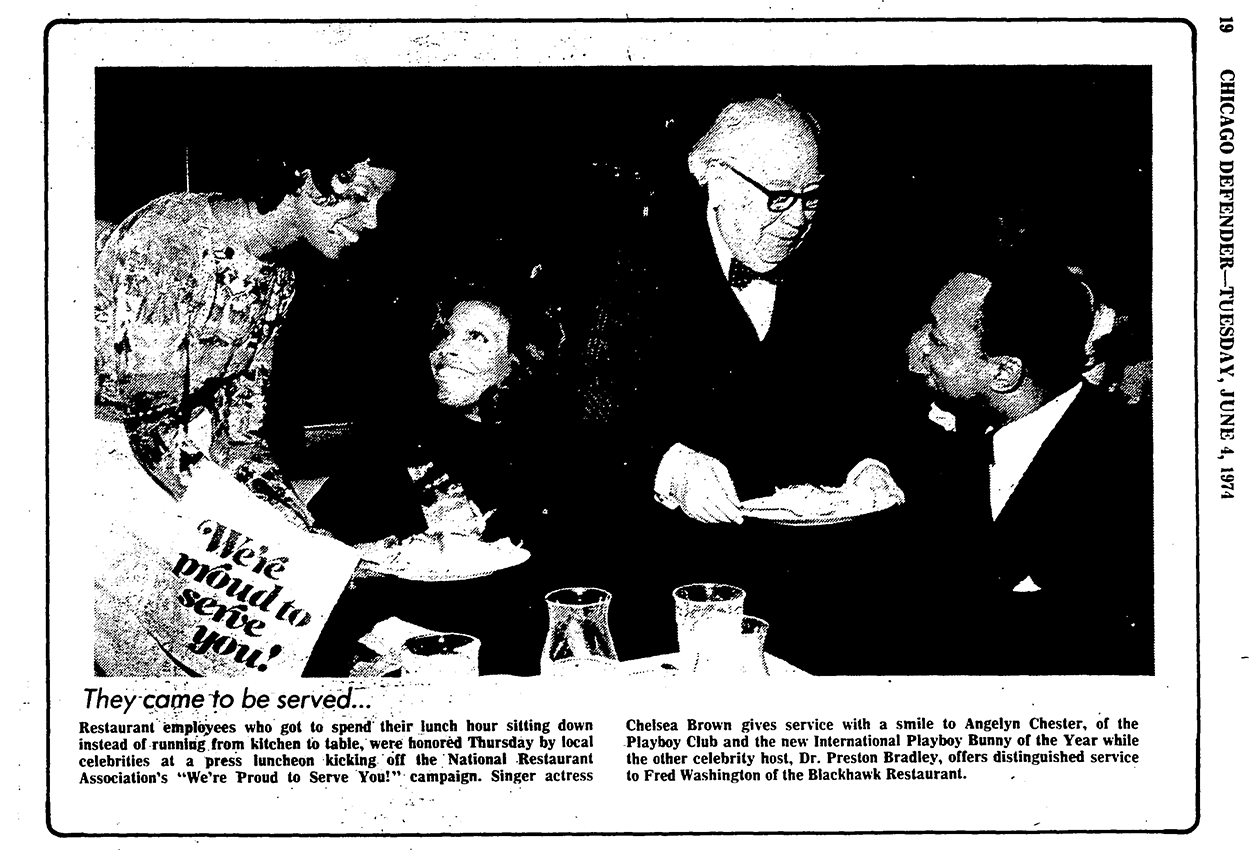

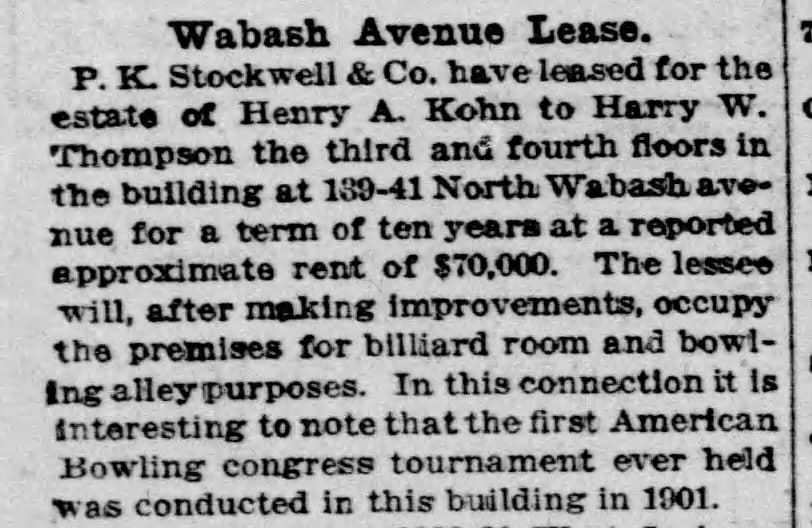

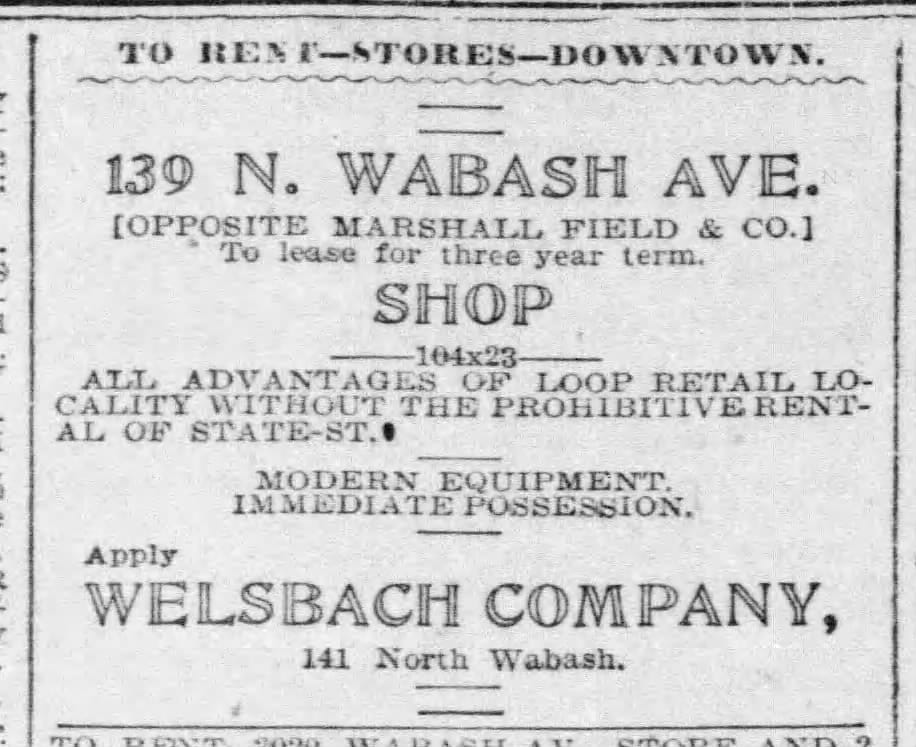
1960 article on the restaurant's 40th anniversary | Linda Sayers, Gale Sayers' wife, at the Blackhawk in 1970, the Chicago Defender | artist Keith Morrison has an exhibition at the Blackhawk, 1970, the Chicago Defender | 1974, Blackhawk employees are waited on by Playboy Bunnies and other celebrities, the Chicago Defender | 1986 RFP for the pedway project | 1910s ads for help and offering to lease out floors in the building
This is where I took the photo from.
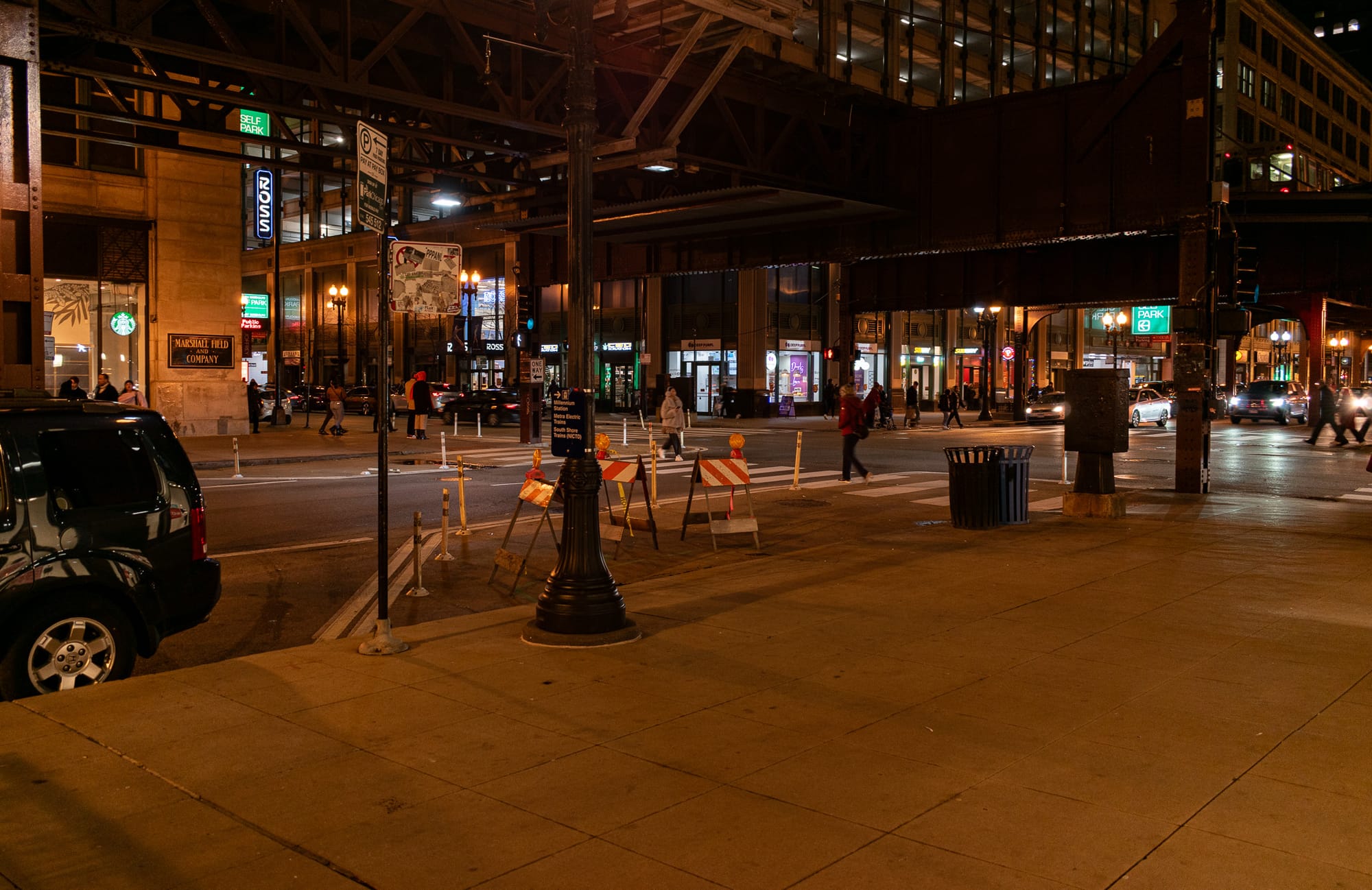
Postcard verso of the 1942 postcard.
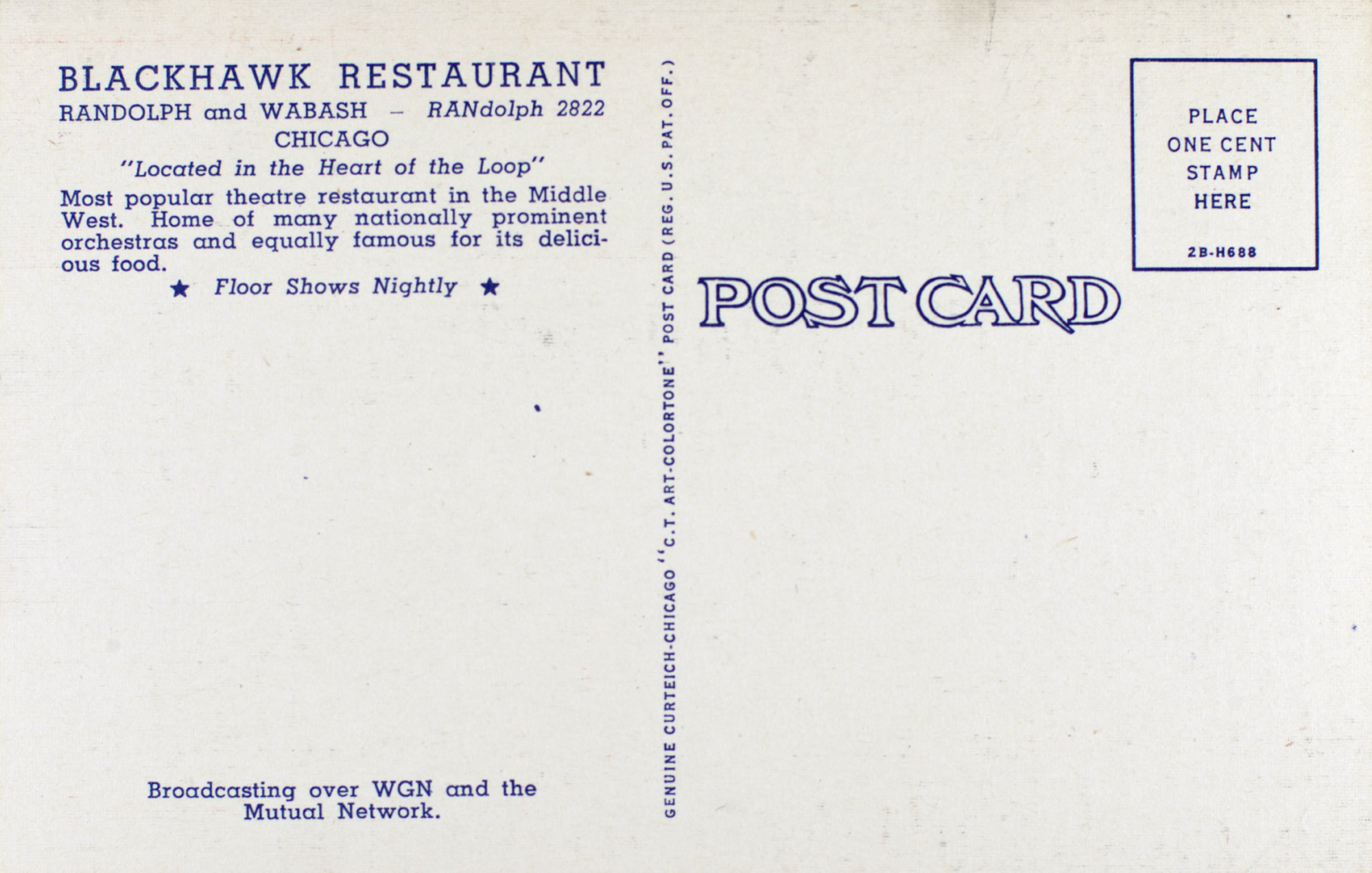





Member discussion: